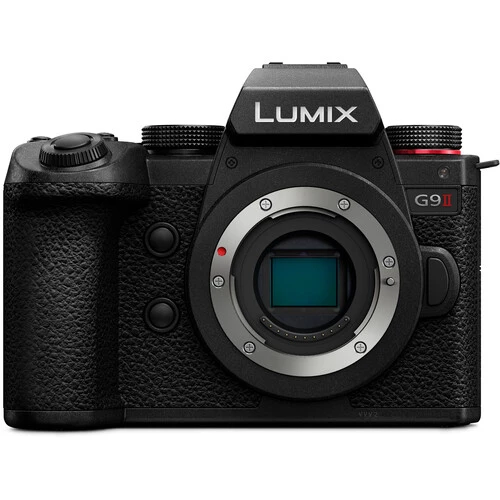FUJIFILM X-H2S Overview
Key Features
- 26.1MP APS-C X-Trans Stacked BSI Sensor
- 4K 120p, 6.2K 30p, FHD 240p 10-Bit Video
- Internal ProRes 422 HQ and F-Log 2
- 7-Stop In-Body Image Stabilization
- 5.76m-Dot OLED Electronic Viewfinder
- 3" 1.62m-Dot Vari-Angle Touchscreen LCD
- 40 fps E. Shutter, 15 fps Mech. Shutter
- 425-Pt. Hybrid AF, AI Subject Detection
- ProRes & Blackmagic RAW via HDMI
- CFexpress Type B & SD UHS-II Card Slots
X-H2S: The New FUJIFILM Hybrid
Balancing strong photo and video capabilities, the FUJIFILM X-H2S is a multimedia mirrorless camera featuring a newly developed X-Trans stacked sensor, refined AF and subject detection, and impressive 6.2K video recording. Topping the X System, this camera mixes the intuitiveness, design, and image quality FUJIFILM is known for with a fresh, speedy approach to video and continuous shooting applications.
Stacked Sensor and 64-Bit Processing
X-Trans 5 Stacked BSI Sensor
The first X Series camera to feature a stacked sensor, the X-H2S sports an APS-C-format 26.1MP X-Trans 5 stacked BSI sensor, which ups the readout speeds and improves low-light performance compared to previous generations. First, as an X-Trans sensor, it uses the unique color filter array that inherently minimizes moiré and contributes to more natural color rendering; next, the BSI design helps reduce noise and improve tonality and clarity; and, finally, the stacked design greatly reduces rolling shutter and other motion distortion to better suit high-speed video and photo photo applications.
X-Processor 5
Partner to the newly designed sensor is a fresh engine—the X-Processor 5—which uses 64-bit processing to realize 3x faster speeds for both video and photo tasks compared to the X-T4. On the video side, this enables recording at up to 6.2K with high bitrates like ProRes 422 HQ or at high speeds, like with 240 fps recording at Full HD.
On the stills end, this quick processing means faster shooting to suit photographing moving subjects. When working with an electronic shutter, shooting at up to 40 fps is possible, with a buffer of 140 consecutive uncompressed raw frame. With the mechanical shutter, shooting speeds up to 15 fps are possible, along with the ability to shoot upwards of 1000 raw frames in a single burst.
Benefitting both video and stills applications, this processing also benefits the sophisticated and AI-backed autofocus system, helps achieve a 14-stop dynamic range, and enables a broad sensitivity range from ISO 160-12800.
Powerful Video Capabilities
4K 120p and 6.2K 30p Internal Recording
With a penchant for video, the X-H2S has a well-rounded recording system that places this camera squarely in the 'hybrid' category and performs equally well for video as it does for video. Internal 4:2:2 10-bit recording is possible in both DCI/UHD 4K at up to 120p and Full HD at up to 240p as well as an open-gate 3:2 6.2K setting that's suitable for anamorphic applications. A variety of codecs are supported as well, including H.265 and three tiers of ProRes: the high bitrate 422 HQ, the standard 422, and the more compressed 422 LT. Also, continuous recording times up to 90 minutes are possible at all frame rates and resolutions.
External Raw Recording
Using the full-size HDMI port, raw video recording is possible when paired with a compatible external recorder. Both ProRes RAW and Blackmagic RAW recording is possible, along with the ability to work with F-Log or F-Log 2 profiles, and either format supports working in resolutions up to the open-gate 6.2K.
Improved Autofocus and Image Stabilization
Hybrid AF with Deep Learning AI
Benefitted by the improved processing, autofocus performance is noticeably faster and more intelligent. This hybrid focusing system uses 425 phase-detection points and is now sensitive down to -7 EV for working in truly low-light conditions. Also, backed by deep learning, an AI adaptive algorithm means this focusing system is better suited to automatically detect and track a variety of subject types. Compared to previous focusing systems, the X-H2S's Face and Eye Detection capabilities have been refined for greater accuracy and to account for unique features, like glasses, face coverings, and hairlines. Also, the range of recognized subjects types has been expanded to include cars, planes, trains, motorcyclists, birds, horses, dogs, cats and more.
In-Body Image Stabilization
Built-in 5-axis sensor-shift image stabilization helps to minimize the appearance of camera shake by up to 7 stops. This system works in conjunction with most X Series lenses, including non-stabilized ones, and benefits working with slower shutter speeds and when shooting in difficult lighting conditions. Additionally, digital image stabilization can also be used during video recording to further aid in steadying footage, especially when recording handheld.
Body Design
Practical and Durable Design
- Large OLED electronic viewfinder features a crisp 5.76m-dot resolution and a 0.8x magnification for bright, clear, and detailed eye-level viewing.
- Rear 3.0" LCD has a high 1.62m-dot resolution and a touchscreen interface for intuitive control. Also, its vari-angle design means the screen can be flipped out to the side, tilted up or down, and closed with the screen against the body for protection.
- 1.28" monochrome LCD screen on the top plate is a simple means for quickly reviewing shooting settings.
- Dual memory card slots include one CFexpress Type B slot and one SD UHS-II slot for file-saving flexibility. The CFexpress Type B slot should be prioritized for higher bitrate video recording and fast continuous shooting, and the SD slot is a convenient alternative for backups or less speed-critical shooting.
- NP-W235 battery provides approximately 720 frames per charge when working with the EVF in Economy Mode, or approximately 580 frames in Normal Mode.
Connectivity
- Full-size HDMI Type A port for outputting video to an external recorder or monitor.
- USB 3.2 Gen 2 Type-C port supports tethering, data transfer, and in-camera battery charging.
- 3.5mm headphone and external microphone ports for greater control over audio recording.
- PC sync port for flash sync.
- 2.5mm remote port for using wired remote controllers.
- Integrated Bluetooth and Wi-Fi connectivity allows for wirelessly sharing images to a mobile device or to use the device to remotely control the camera.
Film Simulation Modes
Film Simulation modes allow you to reproduce the look and feel of several of FUJIFILM's film types, including Provia, Velvia, Astia, Classic Chrome, Classic Neg., Nostalgic Neg., Pro Neg. Hi, Pro Neg. Standard, Eterna, Eterna Bleach Bypass, Acros, Monochrome, and Sepia. Additionally, Grain Effect can be adjusted as well as Color Chrome effect to fine-tune the look of imagery.


Panasonic S5 IIx Overview
Key Features
- 24.2MP Full-Frame CMOS Sensor
- 6K30p 4:2:0 10-Bit Video Recording
- C4K/4K60p 4:2:2 10-Bit Unlimited
- 3.68m-Dot 0.78x-Magnification OLED LVF
- 3.0" 1.84m-Dot Tilt/Free-Angle Touch-LCD
- 779-Point Phase-Detection AF System
- 5-Axis Sensor-Shift Image Stabilization
- ISO 100-51200, up to 30 fps Shooting
- Dual UHS-II SD Slots; Wi-Fi & Bluetooth
- Weather-Sealed Construction
Designed for pro content creators needing strong stills, sophisticated video options, and livestreaming functionality, the second-generation Panasonic Lumix S5 IIX Mirrorless Camera is equipped with a host of new features to bring your vision to life. Benefitting from a new sensor design and an updated processing engine with L2 technology, the S5 IIX is the first Lumix camera to offer Phase Hybrid AF for fast and precise autofocusing performance. Making full use of the 24.2MP sensor and enhanced processor, this camera records 6K video for up to 30 minutes, while unlimited 4K video capture is available as well. Optimized for video, the S5 IIX is also equipped with a new Active I.S. system, which supports walking shots to further enhance image stabilization while recording video.
Unique to the advanced S5 IIX, this model comes pre-loaded with sophisticated video features benefitting the professional user. These include HDMI RAW video data output, USB-SSD recording, ALL-Intra recording, and ProRes recording. Livestreaming functionality is standard as well, and the S5 IIX offers Wireless IP streaming, USB tethering to smartphones, and Wired IP streaming. Additionally, this camera is the first Lumix camera to feature a refined and stealthy all-black design.
New Sensor and Processing Engine
Featuring an upgraded full-frame 24.2MP CMOS sensor and an updated image processing engine with L2 technology, the S5 IIX's sensor incorporates a newly-developed Phase Hybrid AF system — a first for Lumix-series cameras — providing 779 phase-detection points for significantly-improved subject tracking. Balancing high sensitivity and a wide dynamic range, the sensor provides a useful ISO 100-51200 range, which can be expanded to ISO 50-204800 for working in a variety of lighting conditions. Well-equipped for action and fast-moving subjects, the S5 IIX also enables full-res shooting at up to 9 fps with the mechanical shutter and up to 30 fps with the electronic shutter. Additionally, the S5 IIX utilizes sensor-shift stabilization technology and features a High Resolution mode to capture and compile eight separate exposures to create a single 96MP raw or JPEG file. Suitable for static subjects and when working on a tripod, this mode creates a more highly detailed and color accurate image than a single shot alone can produce and produces an image with a 12000 x 8000-pixel resolution.
6K and 4K Video Recording
In addition to stills, the S5 IIX sports highly capable video recording assets. Full-frame 6K30p recording with 4:2:0 10-bit color can be captured for up to 30 minutes, while unlimited video recording is possible when filming in DCI and UHD 4K60p 4:2:2 10-bit mode. The camera supports 120p video capture for videographers who want to create high-resolution slow-motion video, and RAW HDMI output is possible via an optional license upgrade. V-Log has been pre-installed on this camera and is used to capture a flat, neutral gamma curve and an equivalent 14+ stops of dynamic range provides precise control of color data in post-production, as well as seamless editing with footage shot with VariCam cameras.
Borrowing from Panasonic's broadcast line of video cameras, Dual Native ISO helps to achieve a balanced combination of low noise and high sensitivity to better suit working in a variety of lighting conditions. Two dedicated circuits are provided for each pixel: a Low ISO circuit provides base sensitivities of ISO 100 for normal use, ISO 640 when V-Log is applied, ISO 400 when HLG is applied, and ISO 200 when Cinelike D2/V2 is applied; a Low Noise circuit provides base sensitivities of ISO 640 for normal use, ISO 4000 when V-Log is applied, ISO 2500 when HLG is applied, and ISO 1250 when Cinelike D2/V2 is applied.
Pro-Level Video Features
- Offering enhanced performance and usability, the S5 IIX provides HDMI RAW video data output.
- For videographers who want to improve efficiency in data backup and post-processing, recording and playback is supported using an external SSD via USB. ALL-Intra recording and ProRes recording are also supported.
- Designed for modern-users and content creators, the camera allows for Wireless IP streaming, USB tethering to smartphones, and Wired IP streaming.
Phase Hybrid AF System
The S5 IIX is the first Lumix mirrorless camera to adopt a Phase Hybrid AF system, which offers 779 phase-detection points to provide fast and precise focusing for outstanding AF accuracy. When it comes to autofocus, dependability is the most important thing, and with Phase Detection AF you can fully supplement and track the subject in six different situations that until now had been a challenge for conventional systems to capture. Whether shooting stills or video, this means the S5 IIX persistently captures the intended subject in difficult scenes involving multiple people in backlit or low-light environments.
Dual I.S. 2 with Active I.S.
Offering comprehensive support for hand-held use, the S5 IIX incorporates a Dual I.S. 2 image stabilization system, which compensates for approximately 6.5 stops of camera shake to achieve the utmost sharpness for handheld photography. For video applications, the camera is designed with a newly-developed Active I.S. system for walking shots to further enhance image stabilization while the camera is moving and recording video.
Body Design
- Used in conjunction with other members of the L-Mount Alliance, the L lens mount is a versatile interface with a mount diameter of 51.6mm and a flange distance of 20mm for working with a broad range of optics. Additionally, this camera allows for the use of all the classic and modern Anamorphic lenses that have been in use for over 60 years.
- A high-resolution 3.68m-dot OLED EVF offers a clear 0.78x magnification along with a smooth 60 fps or 120 fps changeable refresh rate.
- Large 3.0" 1.84m-dot LCD is a bright, clear means for live view shooting as well as playback and menu navigation. The screen features a free-angle design to suit working from high, low, and front-facing angles, and its touchscreen design affords intuitive settings control.
- An 8-direction joystick and easy-to-use menu design enable quick and efficient operation.
- A USB-C port allows for fast file transferring as well as high-speed in-camera battery charging. Additionally, a new full-size HDMI-A port benefits video applications, a 2.5mm port can be used with the optional DMW-RS2 Remote Shutter, and 3.5mm microphone and headphone jacks suit advanced audio recording needs.
- Dual SD memory card slots — both UHS-II-compatible — offer improved flexibility for image storage, allowing you to segregate raw and JPEG files to different cards, save duplicate files to both cards, or simply double your storage space with overflow recording.
- An industry-first, the S5 II utilizes a built-in cooling fan to suppress the camera's internal temperature for extended or unlimited recording.
- A robustly-built magnesium alloy body with dust and splash-resistant design accommodates working in harsh weather conditions and trying environments.
- First Lumix camera to feature a refined and stealthy all-black design.
Bluetooth and Wi-Fi
Bluetooth Low Energy (5.0) provides constant connection between your smartphone or tablet with minimal power consumption. For more robust wireless activities, IEEE 802.11b/g/n and 802.11a/n/ac support is also available for faster transmission and more fluid remote control and monitoring. Complementing the camera's wireless connectivity, Lumix Sync is an iOS and Android app designed to pair with the camera for smartphone or tablet-based remote shooting control, wireless image transfer, and updating firmware.
Other Camera Features
- Real-time LUT enables color grading to be done in the camera itself
- Live cropping allows in-frame panning and zooming while recording video
- In addition to conventional 3:2, 4:3, 1:1, and 16:9 ratios, photos can also be recorded in 65:24 and 2:1 panoramic formats
- Color Shading Compensation corrects the bluish/reddish coloration on the periphery that may occur when older lenses are mounted
- Compatible with Lumix Tether for remote photo and video shooting via USB
- 4-channel 48 kHz or 96 kHz 24-bit recording with optional DMW-XLR1 XLR microphone adapter
- In-camera USB PD battery charging with optional DMW-BTC15 Battery Charger
FUJIFILM X-H2 Overview
Key Features
- 40MP APS-C X-Trans5 BSI Sensor
- 7-Stop In-Body Image Stabilization
- 8K 30p, 4K 60p, FHD 240p 10-Bit Video
- 5.76m-Dot OLED Electronic Viewfinder
- 160MP Pixel Shift Multi-Shot
- 20 fps E-Shutter, 15 fps Mech. Shutter
- CFexpress Type B & SD UHS-II Card Slots
- ProRes Raw, Blackmagic Raw via HDMI
- Intelligent Hybrid Autofocus
FUJIFILM X-H2: Life in Detail
Pushing the boundaries of APS-C imaging, the FUJIFILM X-H2 is a high-resolution mirrorless crop-sensor camera featuring a groundbreaking 40MP BSI sensor and an arsenal of cutting-edge features packed into a small and durable X-series body. Standing atop the X-System lineup, this high performing camera inherits many of the GFX system's advances in digital capture technology to provide image quality, detail, and color rendition never before seen in a crop-sensor camera, while retaining its characteristic compact form factor and sleek design that has garnered the X-System a loyal following worldwide.
Backside-Illuminated Sensor and 64-Bit Processing

X-Trans 5 BSI Sensor
Ideal for architectural, travel, and landscape photographers, the X-H2 sports a backside-illuminated, APS-C-format 40MP X-Trans 5 HR sensor, which ups the resolution and improves low-light performance compared to previous generations. First, as an X-Trans sensor, it uses the unique color filter array that inherently minimizes moiré and contributes to more natural color rendering; next, the BSI design helps reduce noise and improve tonality and clarity; and, finally, the design greatly reduces rolling shutter and other motion distortion to better suit high-speed video and photo applications. The remarkable resolution allows for 2x digital zoom and has up to 13 stops of dynamic range.
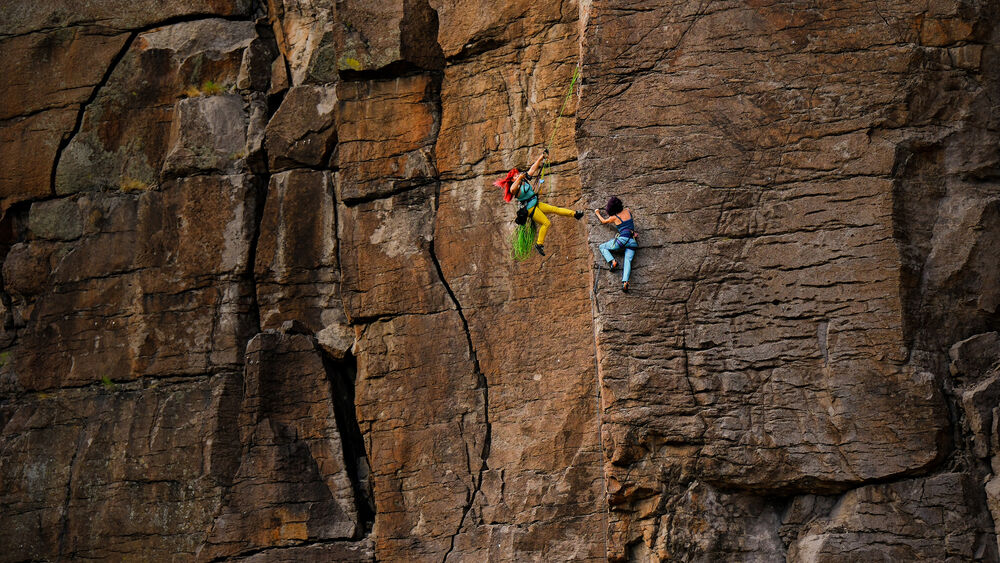
X-Processor 5
Partner to the newly designed sensor is a fresh engine—the X-Processor 5—which uses 64-bit processing to realize 3x faster speeds for both video and photo tasks compared to the X-T4. On the video side, this enables recording at bit rates of up to 720 mb/s.
On the stills end, this quick processing means faster shooting to suit photographing moving subjects. When working with an electronic shutter, shooting at up to 20 fps is possible, with a buffer of 202 consecutive uncompressed raw frames. With the mechanical shutter, shooting speeds of up to 15 fps are possible, along with the ability to shoot upwards of 1000 raw frames in a single burst.
Benefitting both video and stills applications, this processing also benefits the sophisticated and AI-backed autofocus system, helps achieve a 14-stop dynamic range, and enables an enhanced sensitivity range from ISO 125-12800.
4K 120p and 8K 30p Internal Recording
Despite its focus on photography, the X-H2 has an impressive video system capable of 4:2:2 10-bit internal recording in 8K at 30fps and in both DCI/UHD 4K at up to 60 fps and Full HD at up to 240p. A variety of codecs are supported as well, including H.265 and three tiers of ProRes: the high bitrate 422 HQ, the standard 422, and the more compressed 422 LT. Also, continuous recording times up to 160 minutes are possible at all frame rates and resolutions and can be extended to 240 minutes with the external clip-on fan.
External Raw Recording
Using the full-size HDMI port, 12-bit raw video recording is possible when paired with a compatible external recorder. Both ProRes RAW and Blackmagic RAW recording is possible, along with the ability to work with F-Log or F-Log 2 profiles, and either format supports working in resolutions up to the open-gate 8K.
Improved Autofocus and Image Stabilization

Hybrid AF with Deep Learning AI
Benefitted by the improved processing, autofocus performance is noticeably faster and more intelligent. This hybrid focusing system uses 425 phase-detection points and is now sensitive down to -7 EV for working in truly low-light conditions. Also, backed by deep learning, an AI adaptive algorithm means this focusing system is better suited to automatically detect and track a variety of subject types.
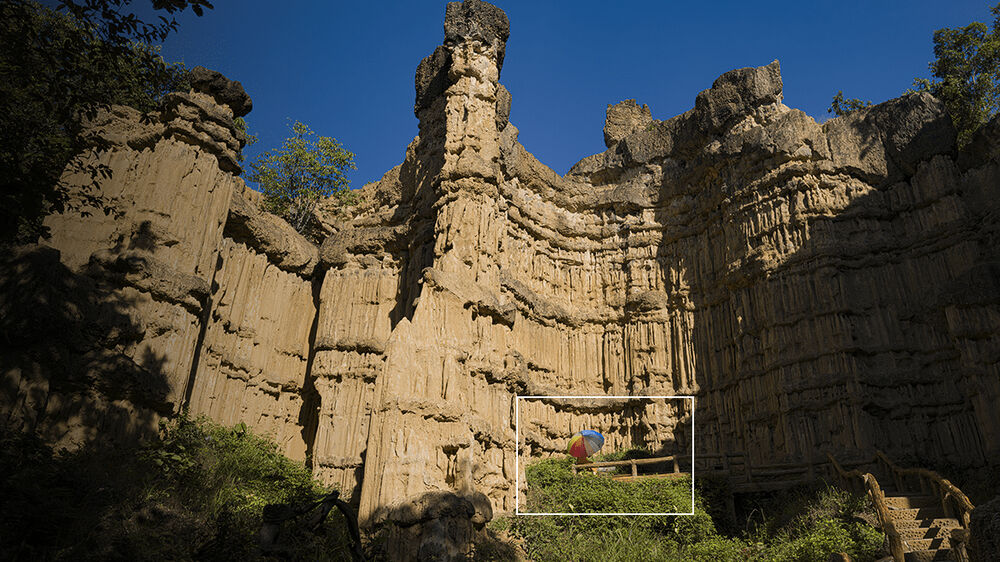
Pixel Shift Multishot
Pixel Shift Multishot takes multiple exposures in rapid succession, each one precisely shifting the image sensor by half a pixel, capturing the subject on a different part of the image sensor each time and yielding a single 160-Megapixel image with the help of the Pixel Shift Combiner software.
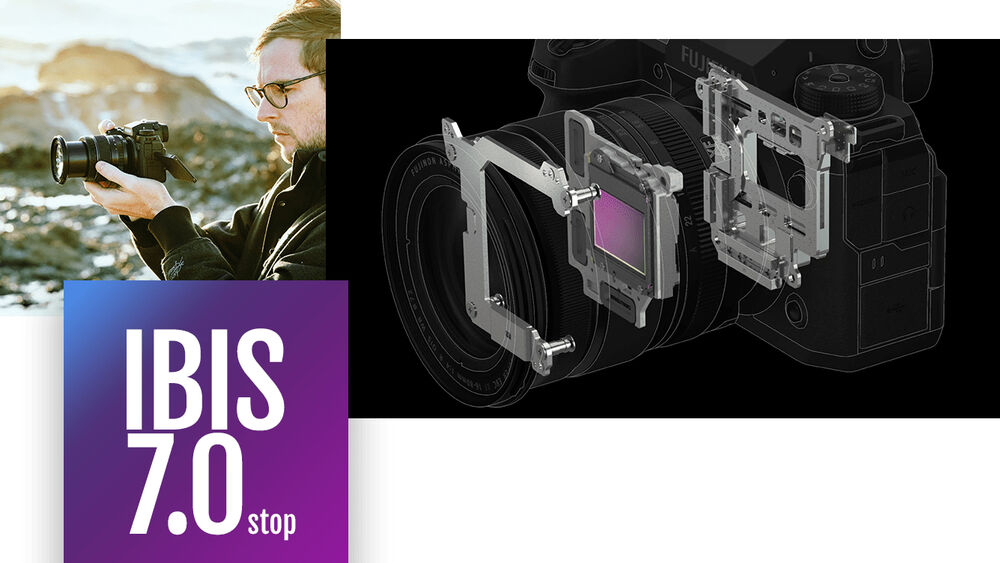
In-Body Image Stabilization
Built-in 5-axis sensor-shift image stabilization helps to minimize the appearance of camera shake by up to 7 stops. This system works in conjunction with most X Series lenses, including non-stabilized ones, and benefits working with slower shutter speeds and when shooting in difficult lighting conditions. Additionally, digital image stabilization can also be used during video recording to further aid in steadying footage, especially when recording handheld.
Body Design
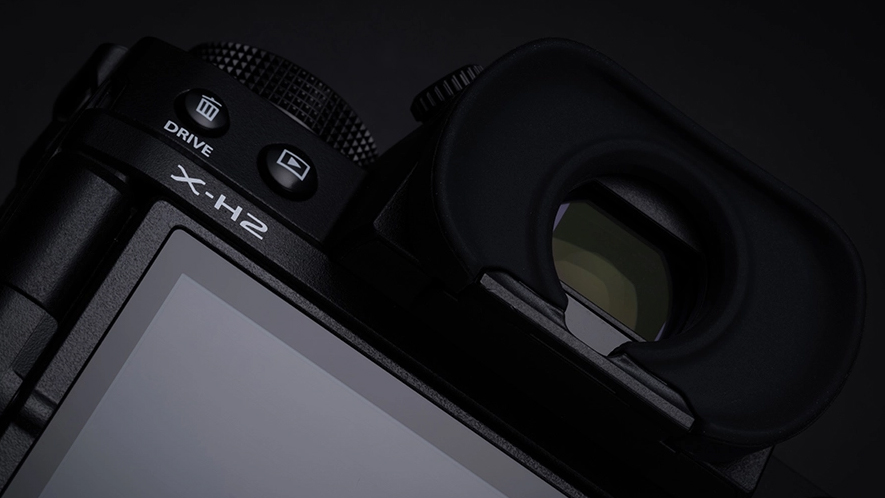
Practical and Durable Design
- Large OLED electronic viewfinder features a crisp 5.76m-dot resolution and a 0.8x magnification for bright, clear, and detailed eye-level viewing.
- Rear 3.0" LCD has a high 1.62m-dot resolution and a touchscreen interface for intuitive control. Also, its vari-angle design means the screen can be flipped out to the side, tilted up or down, and closed with the screen against the body for protection.
- 1.28" monochrome LCD screen on the top plate is a simple means for quickly reviewing shooting settings.
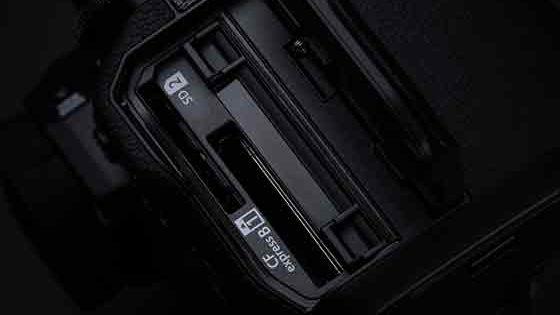
- Dual memory card slots include one CFexpress Type B slot and one SD UHS-II slot for file-saving flexibility. The CFexpress Type B slot should be prioritized for higher bitrate video recording and fast continuous shooting, and the SD slot is a convenient alternative for backups or less speed-critical shooting.
- NP-W235 battery provides approximately 720 frames per charge when working with the EVF in Economy Mode, or approximately 580 frames in Normal Mode.
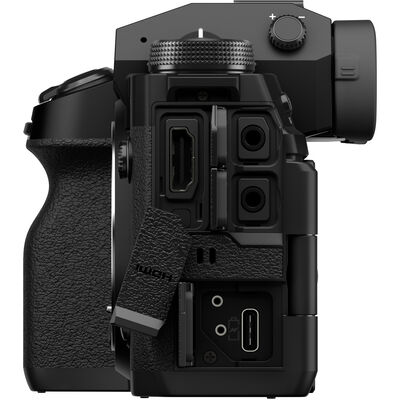
Connectivity
- Full-size HDMI Type A port for outputting video to an external recorder or monitor.
- USB 3.2 Gen 2 Type-C port supports tethering, data transfer, and in-camera battery charging.
- 3.5mm headphone and external microphone ports for greater control over audio recording.
- PC sync port for flash sync.
- 2.5mm remote port for using wired remote controllers.
- Integrated Bluetooth and Wi-Fi connectivity allows for wirelessly sharing images to a mobile device or to use the device to remotely control the camera.
Film Simulation Modes
Film Simulation modes allow you to reproduce the look and feel of several of FUJIFILM's film types, including Provia, Velvia, Astia, Classic Chrome, Classic Neg., Nostalgic Neg., Pro Neg. Hi, Pro Neg. Standard, Eterna, Eterna Bleach Bypass, Acros, Monochrome, and Sepia. Additionally, Grain Effect can be adjusted as well as Color Chrome effect to fine-tune the look of imagery.


Canon EOS R6 Mirrorless Digital Camera with 24-105mm f4-7.1 IS STM Lens
Key Features
- 20MP Full-Frame CMOS Sensor
- DIGIC X Image Processor
- 4K60 and FHD 120 10-Bit Internal Video
- Sensor-Shift 5-Axis Image Stabilization
- 12 fps Mech. Shutter, 20 fps E. Shutter
- Dual Pixel CMOS AF with 1053 Points
- 3.69m-Dot OLED EVF
- 3.2" Vari-Angle Touchscreen LCD
- Subject Tracking with Deep Learning
- RF 24-105mm f/4-7.1 IS STM Lens
for the everyday shooter with high demands, the Canon EOS R6 is a versatile tool to meet the photo and video requirements of a contemporary imaging workflow. This full-frame mirrorless camera revolves around a refined 20MP CMOS sensor and DIGIC X processor, which afford quick shooting up to 12 fps, apt 4K60 video recording, and wide-ranging sensitivity to ISO 102400. It also sports 5-axis in-body image stabilization to help steady shots when working in low-light conditions.
As a do-everything, highly versatile camera, the R6 also employs the sensor and processor for robust focusing performance. Dual Pixel CMOS AF offers quick, smooth, and intelligent focusing using 1053 Selectable points that cover the entire field of view. This focusing system has also been updated to make use of Deep Learning technology for improved subject tracking as well as precise eye, face, and head-detection for both people and animals.
Complementing the imaging capabilities, the R6 sports a bright and detailed 0.5" 3.69m-dot electronic viewfinder, with a high 120 fps refresh rate, and a rear 3.0" 1.62m-dot touchscreen LCD with a vari-angle design to accommodate vlogging needs as well as benefit working from high and low angles. Additionally, dual SD UHS-II memory card slots offer flexible storage and there is of course Bluetooth and Wi-Fi for wireless sharing and remote camera control.
20MP Full-Frame Sensor and DIGIC X Processor
Built around a revised 20MP full-frame CMOS sensor, the EOS R6 offers modest resolution to complement a more manageable workflow, especially for those working with the web and small print forms as their final output. This sensor is paired with a fine-tuned DIGIC X image processor, which enables impressive stills and video capabilities, along with sensitivity from ISO 100-102400, which can be expanded to ISO 204800, along with quick continuous shooting up to 12 fps with a mechanical shutter, or silent 20 fps with an electronic shutter, is ideal for working with moving subjects.
4K60 and Full HD 120 Video Recording
Beyond stills, the 20MP sensor also affords UHD 4K video recording at up to 60 fps, along with Full HD at 120 fps for slow-motion playback. Both formats can be recorded internally at 4:2:2 10-bit and both Canon Log and HDR-PQ are supported for greater control over color rendering, and to suit high dynamic Range output. Additionally, Dual Pixel CMOS AF is supported for all recording settings and external recording, via the HDMI port, enables clean 4K output to an optional external recorded.
Dual Pixel CMOS AF II
An updated Dual Pixel CMOS AF II features 1053 Selectable focusing points, which cover approximately 100% of the image frame for wide and even coverage. This focusing system offers smooth and fast focusing performance in a similar manner to how a camcorder acquires focus. This system integrates two separate photodiodes within each pixel to provide a broad and dense network of phase-detection gathering elements across a majority of the image sensor to reduce focus hunting for faster, more direct control of focus placement. When working with still imagery, this focusing system works to acquire focus quickly and accurately, making it ideally suited to shooting and tracking moving subjects so that critical focus is attained with each shot. When shooting video, a Movie Servo AF mode offers smooth and natural focusing when changing from different subjects or different distances within the scene, as well as the ability to specify tracking sensitivity, AF speed, and Face Tracking priority. Benefited by the Touch AF system, rack focus is possible simply by touching elements within the scene on the touchscreen in order to change focus in an intuitive manner. Subject tracking in movies is also heightened due to the Dual Pixel CMOS AF system's ability to recognize subjects and maintain focus when working within changing or cluttered scenery.
Subject tracking has also been benefitted through the use of Deep Learning technology, which helps to gradually refine the focusing system's ability to quickly and accurately recognize both people and animal subjects. This technology also supports the more refined eye, face, and head detection functions, for both people and animals, that are well-suited for portraiture applications.
Sensor-Shift Image Stabilizer
A first for EOS cameras, the R6 incorporates five-axis sensor-shift image stabilization that compensates for up to an impressive eight stops of camera shake for truly effective compensation of camera shake to suit handheld shooting with slower shutter speeds. This stabilization system also works in concert with lens-based optical image stabilization for both native RF lenses and adapted EF lenses.
Body Design and Wireless Connectivity
- High-resolution 3.69m-dot 0.5" electronic viewfinder provides a bright and detailed means for eye-level viewing and the quick 120 fps refresh rate offers natural motion rendering for a more realistic viewfinder experience.
- Rear 3.0" 1.62m-dot LCD touchscreen features a vari-angle design that benefits front-facing recording, such as for vlogging needs, as well as working from high and low shooting angles.
- Dual SD UHS-II memory card slots are featured for flexible storage needs.
- Both a 3.5mm headphone and a 3.5mm external microphone port are featured for improved audio monitoring and recording capabilities.
- Refined body design incorporates four distinct control dials across the body for intuitive tactile control and a joystick controller is used on the back of the camera for fast and intuitive focus point Selection and menu navigation.
- Durable, weather-sealed body design is built to handle tough working conditions and inclement weather.
- 2.4 GHz Wi-Fi is available for fast file transferring to a mobile device and Bluetooth is present to provide constant device connection via the Canon Camera Connect app.
Canon C400 Overview
Key Features
- 6K FF Back-Illuminated CMOS Sensor
- Full Frame, Super35 & Super16 Modes
- 6K60, DCI 4K/2K, UHD 4K120
- Triple-Base ISO: 800, 3200, 12,800
- PL Mount Adapter Available Separately
- Improved Dual-Pixel CMOS AF II
- Record Internal XF-HEVC S, XF-AVC S
- Record Internal Cinema RAW Light, XF-AVC
- Timecode, Genlock & Return Video Ports
- Compact Form, Ethernet & Wi-Fi Control
Creators looking to capture a rich cine look while accessing versatile imaging tools can now turn to Canon's RF-mount EOS C400 6K Full-Frame Digital Cinema Camera. Based around a new 6K full-frame, back-illuminated CMOS sensor, the C400 features three ISO bases of 800, 3200, and 12,800, covering a truly wide range of light levels. This digital cinema camera blends high-resolution imagery with both cine-style and broadcast features like an optional Cooke/i PL mount, return video, and both Super35 and Super16 modes with solo shooter-friendly functions such as Dual-Pixel CMOS AF II, internal ND filters, and a compact, lightweight form.
6K Full-Frame Sensor
Canon has placed its new 6K CMOS sensor at the heart of the C400 camera, enabling it to offer exceptionally low noise, increased sensitivity efficiency, and better 4K imagery via 6K oversampling. This is all made possible thanks to the improved light capture technology of the back-illuminated, stacked CMOS sensor.
Triple-Base ISOs
The same 6K CMOS sensor also provides the choice of a trio of ISO speeds: 800, 3200, and 12,800, so you can capture both the brilliance of settings like Times Square or a full-sun landscape and the nuances of available light scenes like an interior location or a nighttime city skyline.
Multiple Recording Formats
- Different projects demand specific recording formats, and the C400 has you covered with up to 6K60 Cinema RAW and HQ, ST, and LT Cinema RAW Light 12-bit modes. Oversampled 4K with amazing detail is available in 10-bit 4:2:2 with frame rates up to 120p, all without cropping the image on the sensor. Slow- and fast-motion can be captured at rates up to UHD 4K120 and 2K180.
- Canon has made your editing process easier with two new codecs: XF-AVC S and XF-HEVC S, both featuring an easier naming system and folder structure and metadata preservation, all within the established MP4 format.
Optional PL-Mount Adapter

Widen your lens choices to include a range of beautiful pro cinema "glass" using the separately available PL-RF adapter for the C400. This adapter includes side lock plates for a secure fit and transfers Cooke/i metadata for VF/X and other post-production uses.
Dual Media Slots
Fans of proxy recordings will appreciate the CFexpress Type-B and SD card slots on the C400, which enable sub-recording and proxy capture using the SD card slot while simultaneously recording up to raw using a CFexpress card.
Mechanical ND Filters
Whether you're shooting a cine-style feature or grabbing run-and-gun footage for a documentary or event coverage, you'll appreciate the ability to quickly dial in up to 10 stops of ND filtration with the C400. This near-instant exposure adjustment enables you to maintain your chosen depth of field since it negates the need to stop down on your lens.
Compact, Lightweight Body
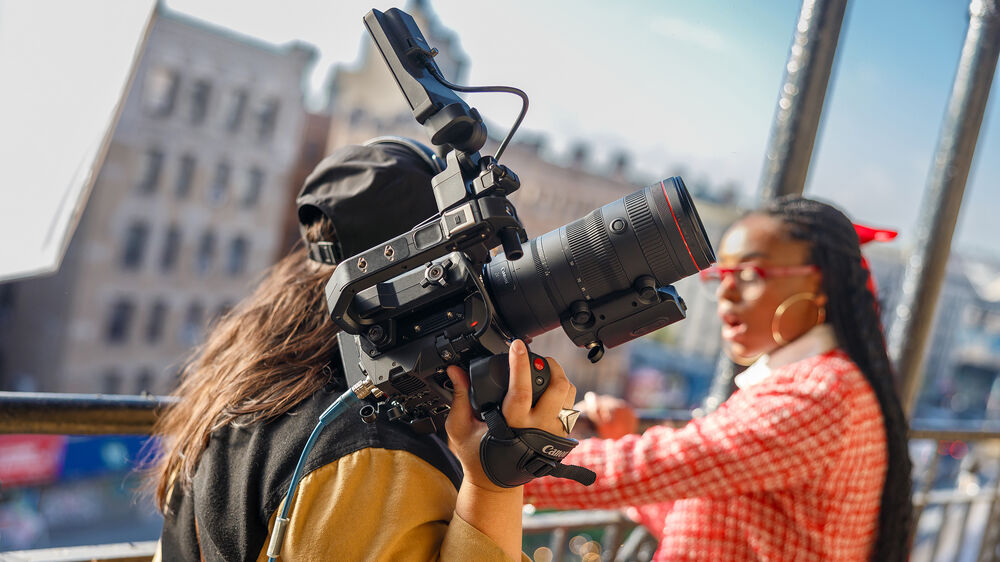
Canon's RF lens mount features a short flange back, reducing its lens mount area and overall size, which makes it the ideal camera for gimbal, handheld, or drone capture.
Improved Autofocus Function
For those moments or whole shoots where you're not assisted by a focus puller, the C400 offers Canon's dual-pixel autofocus function, which has been improved by the wider area of the back-illuminated CMOS sensor, which is available for autofocus. Intelligent tracking lets you follow the eyes, face, head, and body areas of a subject with increased accuracy. For nature documentary shooters, the C400 provides the ability to detect the eyes, face, or body of select animals without being affected by their size or facial orientation.
Production and Broadcast Features
- The versatile C400 incorporates a variety of interfaces that make it suitable for both film- and broadcast-style productions. These ports include 12G-SDI, 3G-SDI, and HDMI video outputs, dual mini-XLR audio inputs, timecode, genlock, and return video DIN connectors, and a 12-pin lens port.
- An automatic clear-scan mode for the shutter detects your light source's frequency, helping to reduce or eliminate the flickering sometimes found in LED walls.
LCD, Handle, and Grip
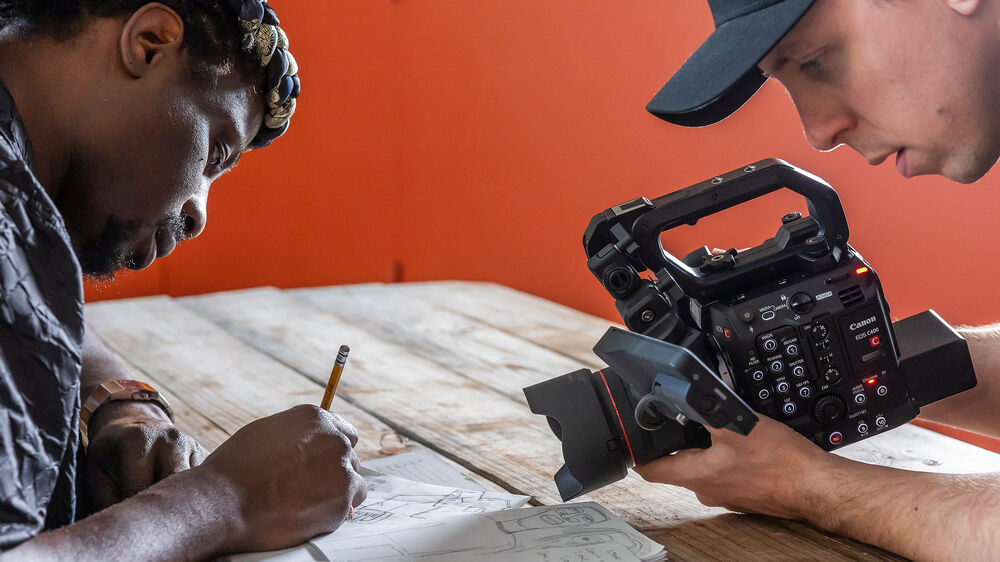
Ergonomic improvements featured by the C400 include a new touchscreen LCD, grip, and battery. The LCD mount has both angle and length adjustments for optimal positioning of the LCD whether you're shooting handheld, shoulder-mounted, or on a tripod. The ergonomic, articulated handgrip features a multifunction shoe, three assignable buttons, and captive screws that won't get lost when you're mounting or detaching the grip.
Ethernet/Wi-Fi Control and IP Streaming
Use the C400's Ethernet port and Canon's IP-based XC protocol to add RC-IP1000, RC-IP100, or third-party remote-control shading to your broadcast-style shoot. The Canon RCCA (Remote Control Camera Application) is compatible with the C400, enabling control of camera settings and multicamera control. The C400 also offers IP streaming using the SRT protocol.
Canon R5 Mark II Overview
Key Features
- 45MP Full-Frame Stacked BSI CMOS Sensor
- DIGIC Accelerator Processing
- Dual Pixel Intelligent AF, Eye Control
- 8K 60 Raw/4K 60 SRAW/4K 120 10-Bit Video
- Up to 30 fps, Pre-Continuous Shoot Mode
- 5.76m-Dot EVF with OVF Sim. View Assist
- 3.2" Vari-Angle Touchscreen LCD
- In-Camera Upscaling to 179MP
- CFexpress & SD UHS-II Memory Card Slots
- Wi-Fi 6E / Wi-Fi 6 Support
Boasting enough horsepower to allow Canon's highest resolution mirrorless sensor to shoot a speedy 30 fps and capture 8K60p raw video, the EOS R5 Mark II Mirrorless Camera is the multimedia professional's solution for versatility, image quality, and intelligence. An all-new 45MP sensor's stacked, back-illuminated design joins a brand new processor to provide upgrades in nearly every category, creating a do-it-all camera that gets the job done.
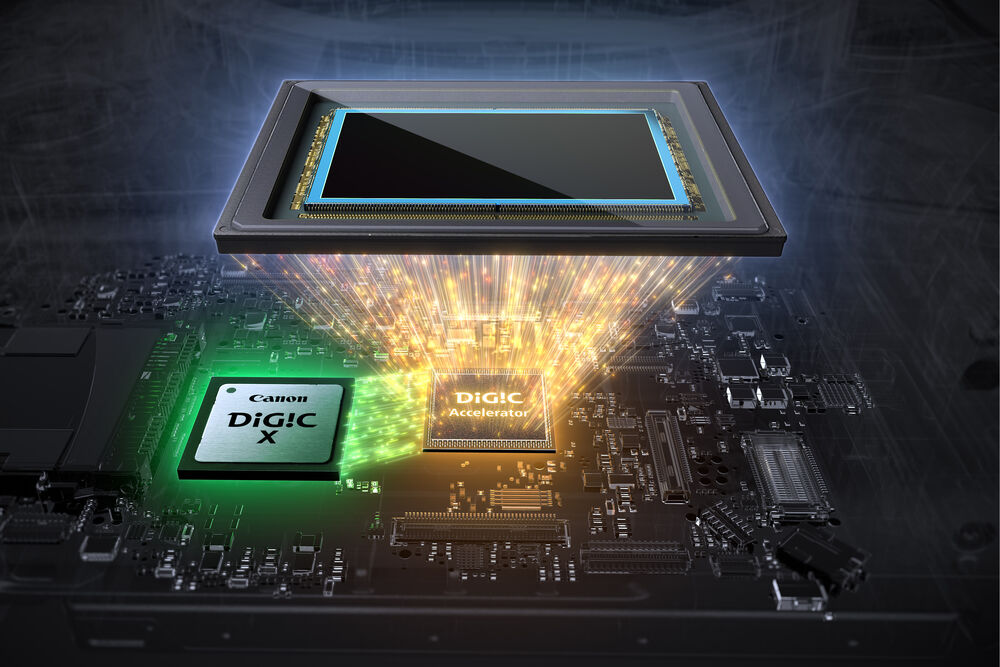
A Stacked Sensor-Processor Combo
The R5 Mark II's new sensor maintains the high resolution of its predecessor while introducing a stacked, back-illuminated design that makes room for Canon's latest image processor, the DIGIC Accelerator. Operating alongside the stalwart DIGIC X, the camera combines the raw image data with high-volume, deep-learning datasets to produce gains in subject tracking and recognition, pre-continuous capture, blackout-free shooting, video resolution, maximum recording time, and more - making the R5 Mark II a powerful and comprehensive professional creator's toolkit.
Autofocus and Deep Learning
The improved processing speeds benefit the EOS R series' already-robust autofocus, incorporating deep learning datasets in its Dual Pixel Intelligence AF to produce advancements in subject recognition and tracking while also improving on the Eye Control Focus feature introduced in the EOS R3.
- The processor's high-level analyses keep the intended subject locked when similar subjects cross one another
- Head, eyes, upper body, and joint structures are all tracked, as well as persons other than the main subject and the ball
- Action Priority Menu setting for still photos identifies sport-specific events, actions, and ball positions for soccer, basketball, and volleyball
- Photograph or upload a person's image to register and prioritize up to 10 subjects
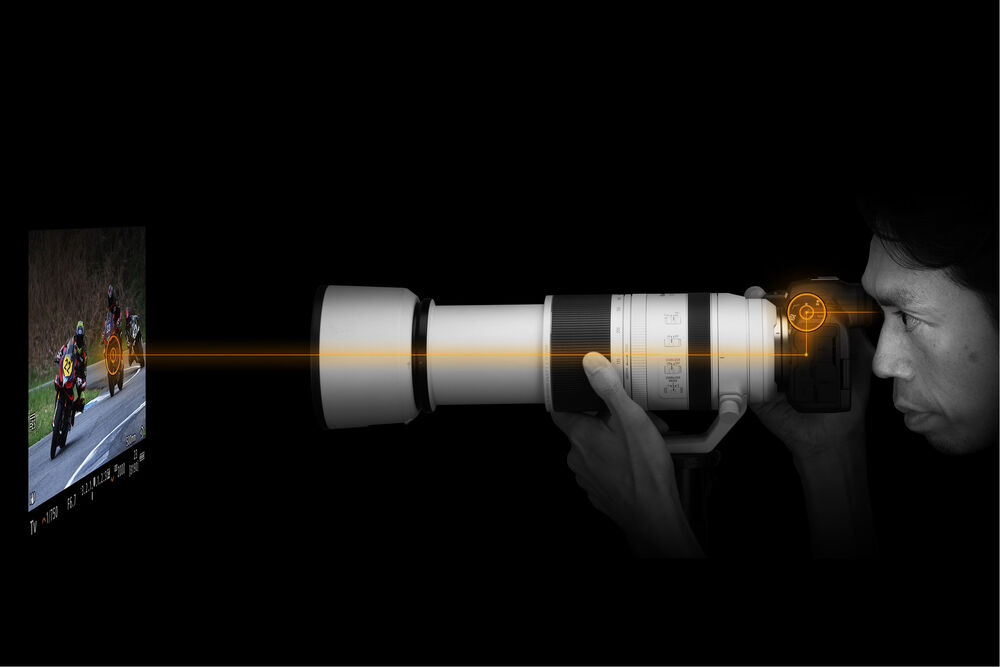
Eye Control Focus
Reintroduced in the EOS R3, Eye Control AF allows shooters to use their eye to initiate where the focus point is simply by looking through the electronic viewfinder. The R5 Mark II boasts newly developed camera optics and a revised line-of-sight detection algorithm to nearly double the detection frame rate. The camera integrates Eye Control Focus with its improved subject tracking and recognition algorithms to keep the sighted subject in sharp focus.
High Speed, High-Quality Stills Performance
Electronic Shutter
Chief among the benefits of the new sensor-processor combination is the ability to shoot high-quality, high-resolution images at blazing speed, unlocking mural-sized moments of athletic brilliance, breaking news, or even history. The R5 Mark II has the power to record the ephemeral and commit it to memory on the biggest scale and in astounding detail.
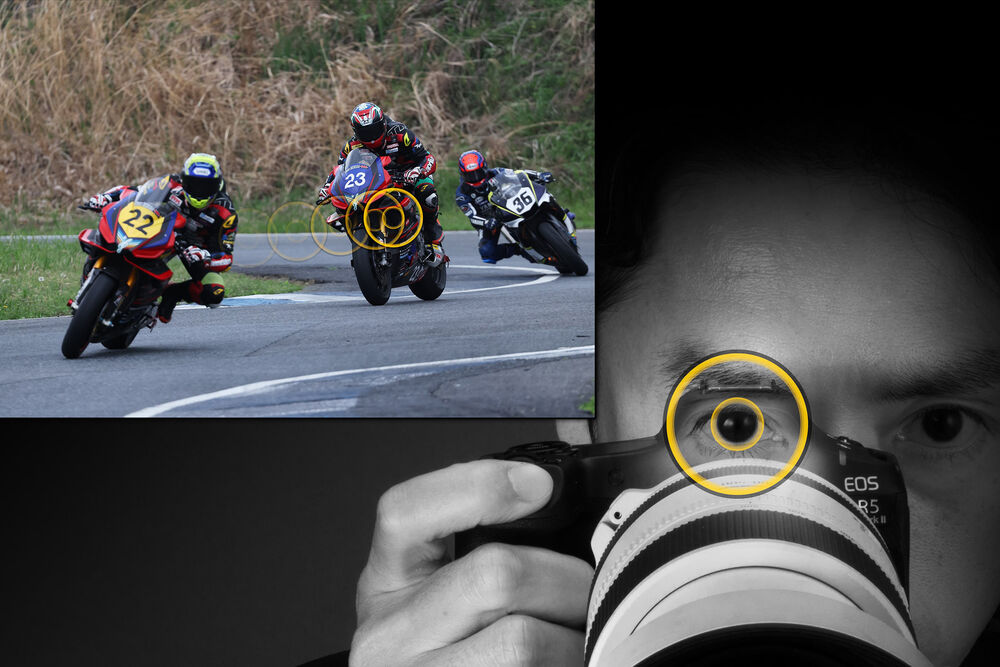
- Continuous shooting speeds of up to 30 fps full-frame raw with reduced shutter distortion, with up to 12 fps when using the mechanical shutter
- Supports always-on blackout-free display when using the electronic shutter
- For indoor sports shooters, the camera effectively suppresses flicker in LED lighting environments by detecting refresh frequencies
- Flash sync speeds of up to 1/250s possible when using electronic front-curtain shutter
Pre-Continuous Shooting
Newly available in the EOS R5 Mark II is the ability to bank up to 15 shots of pre-continuous shooting by half-depressing the shutter button before firing. When the shutter button is fully pressed, the previous half-second of images are written to the memory card, allowing users to "go back in time" to recover a decisive moment they might have missed.
Noise Reduction and In-Camera Upscaling
First and foremost, the R5 Mark II is a camera built for image-makers looking to maximize quality and flexibility. As such, the broad native ISO 100-51200 range suits working in a variety of lighting conditions and the DIGIC Accelerator enables the use of Neural Network Noise Reduction for cleaner images, especially at higher sensitivities.
This same processing power also enables the creation of even higher resolution stills-up to 179MP-via In-Camera Upscaling. This deep learning-based tool doubles the number of pixels horizontally and vertically to produce a larger, more detailed image with maintained sharpness and clarity.

Coordinated Control Image Stabilization
A lightweight, compact build encourages users to hand-wield the camera, and here as elsewhere the R5 Mark II's new innards yield performance gains. Coordinated control helps achieve the optimum hand-shake correction effects, benefitting handheld shooting in low-light conditions and reducing shake when recording videos. The five-axis in-body image stabilizer (IBIS) corrects up to 8.5 stops of unwanted camera shake in the center of the frame and 7.5 at the edges when used in conjunction with compatible. Additionally, Movie Digital IS uses the optical and sensor-shift stabilization methods along with digital IS to help acquire steadier footage while moving.
A Cinema EOS-Integrated 8K Powerhouse
The R5 Mark II inherits many of innovations that made its other relative, the R5 C, a favorite among combination video-stills shooters, and carries over much of its Cinema EOS cousin's features and workflow. Like its predecessors, the 45MP full-frame sensor enables impressively high-resolution DCI 8K raw video recording internally, now up to 60 fps, along with 4K SRAW also at the full sensor width.
- Reads out signals for all effective pixels from its full-frame 8K sensor, enabling 4:2:2 10-bit high-definition recording through oversampling during 4K and 2K video recording
- Record High Frame Rate (HFR) movies with sound at up to 120p at DCI/UHD 4K resolutions (4096 x 2160/3840 x 2160) in 4:2:2 10-bit without cropping the sensor
- Supports MXF-based XF-AVC, which offers 10-bit 4:2:2 files, as well as the highly versatile MP4 for lightweight proxy files in various professional workflows
- External raw recording is supported for compatible recorders with a full size, HDMI Type-A port
- Split saving is possible with raw and proxy video saved to separate memory cards
- Supports Canon Log3, a gamma designed for simple grading, such as tightening dark areas and adjusting tones, as well as integration with other Cinema EOS system footage
- The following time code settings are supported: start time setting, movie recording count, movie play count, HDMI time code on/off, HDMI rec. command on/off, drop frame enable/disable)
- Canon Log2, PQ, and HLG in-camera custom picture profiles also supported
- High-quality audio supported with 4-Channel, 24-bit LPCM
- Recording times up to 120 minutes are possible at 4K 60 settings and below or, if paired with an optional grip, larger recording formats or longer recording times are possible
- Integrated waveform monitor, false color & zebra display, tally lamp
- Compatible with Canon VR and RF 5.2mm f/2.8 L Dual Fisheye lens
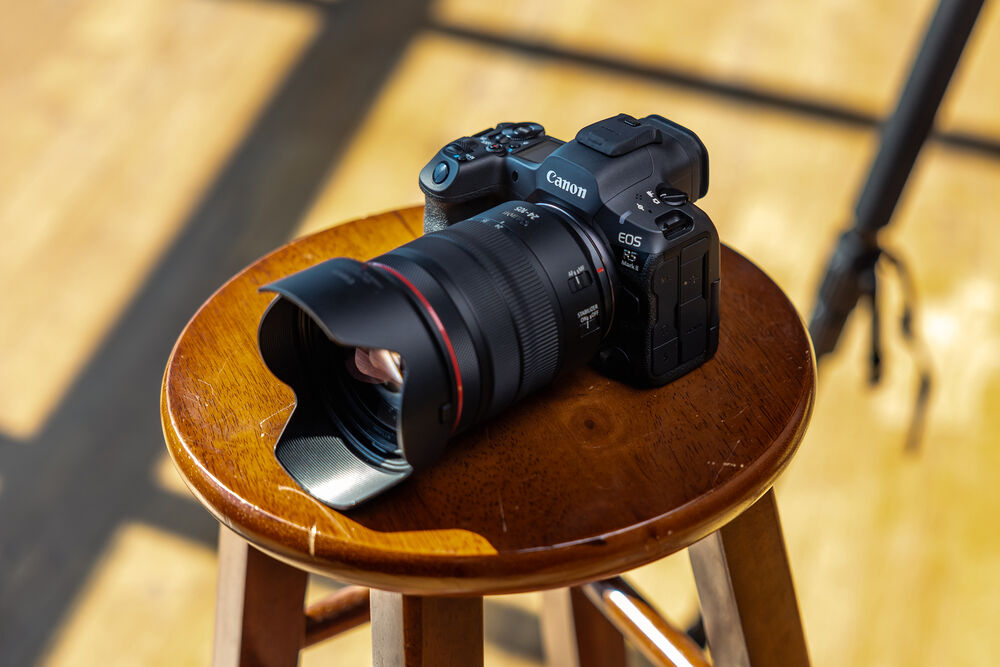
Body and Connectivity
- A 5.76m-dot, 0.76x-magnification OLED electronic viewfinder is featured for clear, high-resolution eye-level viewing at a 120 fps refresh rate with support for blackout-free viewing
- 3.2" vari-angle LCD benefits working high, low, and front-facing angles and features a 4.15m-dot resolution with a touchscreen interface for vivid playback, live-view monitoring, and more
- Dual memory card slots are featured, a CFexpress Type B slot for raw video recording and fast continuous shooting and a UHS-II SD card for backups or less speed-critical shooting
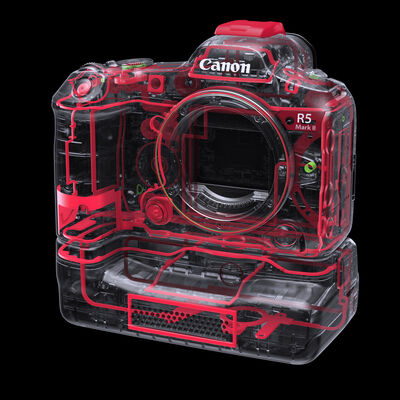
- First EOS camera with Wi-Fi 6E/Wi-Fi 6 wireless support for even faster communication across wider frequency bands
- New, higher-capacity LP-E6P lithium-ion battery necessary for 8K video, top drive speeds, and other high-end capabilities; the camera will accept LP-E6N and LP-E6NH at limited capabilities and life durations
- Three optional battery grips are available, including two featuring a 2.5G BASE-T Ethernet interface and RJ-45 port for a fast and secure hardwired connection and one with a cooling fan for extended video runtimes
- Lightweight and compact with a dust- and moisture-sealed construction suitable for working in inclement conditions
DJI Neo Motion Fly More Combo
Key Features
- 135 g, Light and Portable [1]
- Palm Takeoff & Landing [3]
- AI Subject Tracking, QuickShots
- Multiple Control Options [4]
- 4K Ultra-Stabilised Video
- Full-Coverage Propeller Guards
At 135 g,[1] DJI Neo is DJI's lightest and most compact drone to date. [2] Takeoff and land on your palm effortlessly without a remote controller, and capture cinematic footage with YOU in focus. Soar through breathtaking scenery, indoors and out, and be sure to include everybody in a group photo. Enjoy a fresh perspective on everyday life with DJI Neo.
From Your Hand to the Sky—Palm Takeoff [3]
DJI Neo gracefully takes off and lands from your palm. [5] Simply press the mode button on Neo, select your desired shooting mode, and Neo automatically does the rest to capture impressive footage, all without a remote controller!
Take Centre Stage With AI Subject Tracking
Whether you're cycling, skateboarding, or hiking, Neo keeps pace as your personal photographer and ensures you are always in the spotlight. Equipped with AI algorithms, Neo can follow the subject within the frame, so you can set up captivating follow shots with ease.
Spark Creativity With QuickShots
With just a flick of your finger, let DJI Neo automatically film for you. DJI Neo offers six intelligent shooting modes, [5] providing a dynamic range of angles to elevate your creative footage.
Multiple Control Methods
Compact yet capable, DJI Neo flies with style. It not only supports controller-free aerial filming but can also be paired with the DJI Fly app, remote controllers, RC Motion, DJI Goggles, and more for increased flight and camera control.
Voice Control [6][7]
"Hey Fly"- Wake the DJI Fly App with these words to enable voice control and pilot DJI Neo with spoken flight directives.
Watch Video
Mobile App Control [6]
DJI Neo supports direct connection to a smartphone via Wi-Fi, so you don't need to purchase a remote controller. You can control Neo using virtual joysticks on the DJI Fly app interface, with a control range of up to 50 metres. [8]
The app supports switching between horizontal and vertical display for controlling the aircraft. You can check live feeds in real-time and adjust the follow angle and distance for flexible and effortless filming.
RC Control [9]
When paired with the DJI RC-N3, DJI Neo can achieve a maximum video transmission distance of 10 kilometres. [10] Flexibly operate the camera using traditional RC control sticks when you need to capture professional level shots.
Immersive Motion Control [9]
DJI Neo can be paired with DJI Goggles 3/DJI Goggles N3 along with either an RC Motion 3 or FPV Remote Controller 3, with a video transmission distance of up to 10 kilometres.[10] When used with RC Motion 3, DJI Neo masters the art of one-press aerobatics, seamless indoor navigation; deftly manoeuvring through tight spaces* with ease.
The palm-sized DJI Neo is flexible and agile in the air, making it the perfect companion for honing your skills in Manual mode.
Uncompromised Image Quality
DJI Neo sports a 1/2-inch image sensor for snapping 12MP stills. Combined with DJI's powerful stabilisation algorithms, it can produce 4K UHD stabilised videos [11] straight out of the camera, and 1080p vertical video to make your content pop.
Vertical Video Recording
Neo supports 1080p vertical video recording with a 9:16 aspect ratio, perfect for social media. This allows for instant sharing without the need for additional cropping, making the content more focused on your highlights.
4K Ultra HD Video
DJI Neo supports multiple resolutions and frame rates for video recording and up to 4K/30fps [11] RockSteady/HorizonBalancing videos that maintain clarity in both highlight and shadow areas, ensuring rich detail is visible.
Stabilisation Features for Steady Imagery
DJI Neo is equipped with a single-axis mechanical gimbal, combined with RockSteady and HorizonBalancing stabilisation, [12] and it is capable of handling high-speed or large-amplitude flight, as well as up to Level-4 wind conditions. The stabilisation algorithms significantly reduce overall image shakes and corrects horizon tilt within ±45°, [12] for smooth and stable footage.
22GB Internal Storage
DJI Neo can store up to 40 minutes of 4K/30fps video or 55 minutes of 1080p/60fps video, allowing you to keep all your memories stored.
Convenient Audio Recording
When controlling DJI Neo directly with the DJI Fly app, or with a RC-N3 or RC-N2 standard remote controller, you can capture audio using DJI Mic 2 [13] when it is Bluetooth connected to your mobile phone, or directly through the phone's built-in microphone. The DJI Fly app can also automatically eliminate propeller noise and merge your audio track with your footage to ensure clear sound even when shooting low-altitude vlogs.
High-Speed QuickTransfer
No data cable needed! After connecting to your phone via Wi-Fi, the footage filmed by DJI Neo can be quickly transferred to the DJI Fly app. Transfer instantly after filming, making post-production and sharing smoother.
One-Tap Glamour
Ensure you always look your best and shine with confidence by adding Glamour Effects. Just import footage into the DJI Fly app to get started.
Editing Made Easy
The DJI Fly app offers a vast selection of templates and sound effects for quick and easy editing. Create and share videos efficiently without needing to download the footage to edit, saving storage space on your phone.
Stable Flight, Impressive Battery Life
Using an infrared and monocular vision positioning system, DJI Neo can hover steadily in the air, maintaining stability even in wind conditions up to Level 4. It also supports automatic Return to Home (RTH) for convenient, worry-free operation.
Return to Home (RTH)
Don't worry about returning home, for palm takeoff/landing or mobile app control, Neo will return to the takeoff point after completing it's course. When using a remote controller or immersive motion control, Neo supports Return to Home (RTH) and Failsafe RTH, for effortless navigation back to you.
18-Min Flight Time
With 18 minutes of flight time, [14] DJI Neo can perform over 20 excursions [15] to and from your palm in succession, documenting life's little moments with its sleek design that doesn't skimp on flight duration.
Direct Charging, Quick Power Replenishment
Connect the aircraft directly to a power source using a Type-C data cable for convenient charging. Additionally, DJI Neo's Two-Way Charging Hub [16] can charge three batteries simultaneously, [17] increasing both charging speed and efficiency.
Vlog Anytime
DJI Neo comes with the aircraft, an intelligent flight battery, propeller guards, and more, enabling you to swiftly dive into the thrill of flight at an affordable entry price—making it an exceptional deal for novices. You can also purchase batteries separately to extend flight time and power up your fun.
Level-Up Your Aerial Photography
The DJI Neo Fly More Combo includes the aircraft, an RC-N3 Remote Controller, three intelligent batteries, a two-way charging hub, and more, providing superior flight control and camera operation, for everyday to precise aerial creation.
Immersive Flight
Unlock motion control and immersive first-person view (FPV) flying with the DJI Neo Motion Fly More Combo, which includes the aircraft, RC Motion 3, DJI Goggles N3, three batteries, and the Two-Way Charging Hub. Whether indoors or out, DJI Neo's compact form effortlessly manoeuvres through spaces.*
Pair it with DJI Goggles 3/DJI Goggles N3 and FPV Remote Controller 3 [18] to unlock Manual mode flying, elevating your flight experience to new heights of excitement.
Please Note
* DJI Neo does not support obstacle avoidance. To ensure flight safety, fly within a visual line of sight. To fly beyond visual line of sight (BVLOS), ensure that the aircraft is in good condition, the user is qualified, and the flight is compliant with local regulations for BVLOS.
At 135 g, DJI Neo is DJIs lightest and most compact drone to date. Takeoff and land on your palm effortlessly without a remote controller, and capture cinematic footage with YOU in focus. Soar through breathtaking scenery, indoors and out, and be sure to include everybody in a group photo. Enjoy a fresh perspective on everyday life with DJI Neo.
DJI Neo gracefully takes off and lands from your palm. Simply press the mode button on Neo, select your desired shooting mode, and Neo automatically does the rest to capture impressive footage, all without a remote controller! Whether youre cycling, skateboarding, or hiking, Neo keeps pace as your personal photographer and ensures you are always in the spotlight. Equipped with AI algorithms, Neo can follow the subject within the frame, so you can set up captivating follow shots with ease.
This text is summarised by AI
Summary
Focal Length: 13mm
Flight Time: 18 mins
Max. Speed: 16 m/s (S Mode)
Media Type: Internal SSD
Resolution and Frame Rate: 4K 30p
Sensor: CMOS
Weight: 0-2kg
Sony a1 Overview
Key Features
- 50MP Full-Frame Exmor RS BSI CMOS Sensor
- Up to 30 fps Shooting, ISO 50-102400
- 8K 30p and 4K 120p Video in 10-Bit
- 4.3K 16-Bit Raw Video Output, S-Cinetone
- 9.44m-Dot EVF with 240 fps Refresh Rate
- 759-Pt. Fast Hybrid AF, Real-time Eye AF
- 5-Axis SteadyShot Image Stabilization
- Dual Drive Mech. Shutter, 1/400 Sec Sync
- 5 GHz MIMO Wi-Fi, 1000BASE-T Ethernet
- Dual CFexpress Type A/SD Card Slots
A flagship in the truest sense, the Sony Alpha 1 is the one camera designed to do it all. Built without compromise, this full-frame mirrorless offers high-resolution for stills shooting, impressive 8K video recording, speed and sensitivity, and connectivity for the most demanding professional workflows.
At its core, the Alpha 1, or a1, is distinguished by a newly designed 50.1MP full-frame Exmor RS BSI CMOS sensor and the BIONZ XR processing engine. Pairing the efficient stacked sensor design with optimized processing means the a1 is capable of 30 fps continuous shooting at full-resolution, 8K 30p and 4K 120p 10-bit video recording, and still offers versatile sensitivity up to ISO 102400 for low-light shooting. The sensor's design also includes a 759-point Fast Hybrid AF system, which offers advanced subject tracking and Real-time Eye AF on humans and animals, even including a dedicated Bird Mode.
Despite the connotations of a high-resolution sensor, the a1 is a strong contender in the video arena, offering 8K and 4K recording resolutions along with full pixel readout, internal 4:2:2 10-bit sampling, and 16-bit raw output via the full-size HDMI. No recording limit allows for extended takes and, matching with professional cine cameras, the a1 includes S-Cinetone support for smooth skin-tone rendering along with well-controlled highlights and soft colors.
Physically, the a1 has a familiar shape, but internally it reaps the best tech of the Alpha series with some notable upgrades, including a 9.44m-dot OLED EVF that touts a 240 fps refresh rate for fluid motion rendering and greatly reduced blackout when shooting continuously. The camera's shutter design has also been revised and now offers full-frame flash sync speeds up to 1/400 sec, and flash sync up to 1/200 sec is even supported when working with the silent electronic shutter. At the rear of the camera is a 3.0" tilting touchscreen LCD and both Bluetooth and Wi-Fi connectivity, with 2x2 MIMO support, offer wireless remote control and file transferring capabilities. Additionally, the a1 includes dual memory card slots, both of which support working with CFexpress Type A or SD UHS-II memory cards for flexible and high-speed file storage.
50.1MP Exmor RS BSI CMOS Stacked Sensor
Newly developed 50.1MP Exmor RS full-frame sensor features a stacked back-illuminated design with integrated memory that maintains high image clarity, expandable sensitivity up to ISO 102400, and a 15-stop dynamic Range while also enabling fast 30 fps shooting and and phase-detection AF. The sensor also enables recording lossless compressed raw files for flexible editing during post-production while maintaining a relatively lightweight file size. Additionally, the 50.1MP resolution not only benefits stills shooters as it also offers full-frame 8.6K oversampling for 8K video recording.
BIONZ XR Processor
A revised BIONZ XR engine greatly benefits image processing capabilities throughout the camera system, including up to 8x faster processing, greatly reduced rolling shutter, and more fluent interface and file management handling speeds.
Up to 30 fps Shooting and Updated Shutter
- Efficient sensor design and processing enables high-speed shooting up to 30 fps at full 50.1MP resolution, with full AF and AE capabilities, when working with an electronic shutter. When working with the mechanical shutter, speeds are still kept high at 10 fps. Also, a large buffer memory permits recording up to 155 compressed raw frames, or 165 JPEGs, in one single burst at 30 fps.
- Suiting fast-paced continuous shooting is a blackout-free viewfinder experience, which makes use of a 240 fps refresh rate for fluent eye-level viewing.
- Updated electronic shutter offers silent, vibration-free performance and also supports anti-flicker shooting for working under fluorescent, LED, or other flicker-prone types of artificial light, even while shooting at 30 fps with 120 fps AF speeds.
- Due to quickened readout speeds, electronic shutter flash sync is possible up to 1/200 sec. Even faster flash sync speeds are available when using the updated mechanical shutter, too, which can sync at 1/400 sec in full-frame or 1/500 secwith an APS-C crop.
8K 30p and 4K 120p Video Recording in 10-Bit
- Making use of the high-resolution sensor and fast processing capabilities, UHD 8K 30p XAVC HS 10-bit 4:2:0 video recording is possible using the full width of the sensor, offering 8.6K oversampling for impressive sharpness and realism. for easy handling of this high-res recording mode, low bit-rate proxy files with HD resolution can be simultaneously recorded faster for playback. Also, 8K video at 400 Mb/s can be written to a V90-rated UHS-II SD card, or 200 Mb/s to a V60 card, and 8K can be output over HDMI in 8-bit 4:2:0 format.
- Recording up to UHD 4K is possible with frame rates up to 120p; when recording up to 60p the a1 offers full pixel readout and at 120p it uses a 10% crop. Oversampled 4K recording is also possible, via a 5.8K capture area, with a Super 35 crop. Internal 10-bit 4:2:2 sampling is also possible in all recording modes and, if recording externally via the full-size HDMI A port, 16-bit raw output is also possible from a 4.3K capture for even greater tonal reproduction and post-production flexibility.
- The a1 employs a pair of codecs to suit different workflows: XAVC HS, which uses HEVC/H.265 encoding to retain more detail at smaller bitrates and XAVC S-I, which is an intraframe codec for consistent performance and quality at bitrates up to 600 Mb/s.
- High-speed, 120 fps recording also enables 4x and 5x slow-motion movie recording with the frame rate playback set to either 30p or 24p or, if moving down to Full HD resolution, an effective 240p frame rate is also available for even greater motion control.
- No recording time limit allows for unlimited clip lengths and the camera's physical design features an improved heat-dissipating structure to promote longer possible recording times; longer than 30 minutes for 8K 30p or 4K 60p videos, or recordings done at 10-bit 4:2:0.
- S-Cinetone can be used to deliver distinct colors and healthy-looking skin tone rendering that matches the FX9 and FX6 cameras and is based on technology from the professional Cinema Line cameras, such as the VENICE. This color profile offers natural mid-tones, soft colors, and especially well-controlled highlights.
- Affording extensive customizable color and gamma controls, the you can adjust the gamma, black level, knee, color level, and more. Also, users can use the same S-Log2 Gamma Curve that is found on high end Sony Cinema cameras that squeezes up to 1300% more dynamic Range into the video signal then traditional REC709, for increased post-production flexibility.
- HLG (Hybrid Log-Gamma) support is also available, along with the BT.2020 color space, for recording within a wide color gamut and, in addition to S-Log2, S-Log3 is also available for producing a 15+-stop dynamic Range with increased grading control in the shadow to mid-tone regions of the image.
Fast Hybrid AF System
- Covering 92% of the image area, a Fast Hybrid AF system incorporates 759 phase-detection points along with 425 contrast-detection areas for quick and precise focusing in a variety of lighting conditions with sensitivity down to -6 EV. This focusing system is available for use in all recording modes, to benefit both video and stills applications.
- Fast sensor readout and improved processing also enables up to 120 AF and AE calculations to be performed per second for faster, more responsive tracking and accurate results.
- Lock onto subjects quickly using Real-time Tracking for AI-based tracking on moving subjects or touch tracking for manual selection of the subject.
- Real-time Eye AF, suitable for both humans and animals, also ensures critical sharpness when shooting portraits.
- Dedicated Real-time Eye AF Bird Mode lets you select the bird to be tracked and the camera will automatically detect the bird's eye and track it, regardless if the bird is in flight or still. This mode even works once a sitting bird takes flight.
- Helping to fine-tune how the focusing system performs, seven-step AF transition speed and five-step AF subject shift sensitivity controls let you refine how quickly focus shifts from point to point and how smoothly focusing shifts occur.
5-Axis SteadyShot INSIDE Image Stabilization
- Enhanced 5.5-stop effective 5-axis SteadyShot INSIDE image stabilization system compensates for five different types of camera shake encountered during handheld shooting of stills and video and allows users to confidently use any lens, even adapted lenses, for critical shooting without encountering blur from camera shake.
- for long focal lengths, the system will correct for pitch and yaw adjustments. Macro and high-magnification imagery, on the other hand, will benefit from the inclusion of horizontal and vertical shift compensation. All shooting styles will get usage out of the roll compensation. All 5 axes of stabilization will function at all times, even when used with third-party lenses and adapters or lenses with built-in optical stabilization.
- Additionally, specifically for video, there is also an Active IS mode that adds even more precise stabilization methods for even smoother footage straight out of camera.
Pixel Shift Multi Shooting
This unique compositing mode allows you to achieve even greater resolution than the 50.1MP sensor affords. Working in conjunction with the sensor-shift image stabilization, this mode shifts the sensor while making 16 consecutive exposures in order to acquire approximately 199MP of information for greater color accuracy and detail than possible with a single exposure. These files can then be merged together during post-production by using the Sony Imaging software suite.
Body Design
- An impressive QXGA OLED Tru-Finder EVF features a high 9.44m-dot resolution and 0.9x magnification for exceptionally bright, clear, and detailed eye-level viewing. This viewfinder has a dedicated 240 fps High Quality+ setting for smooth motion rendering and the finder's physical design has a long 25mm eye point, 41° field of view, and features a fluorine coating on the outermost viewfinder element to benefit cleaning.
- A 3.0" 1.44m-dot tilting screen benefits working from high and low angles. This LCD is a touchscreen, too, for intuitive shooting control and menu navigation.
- Dual memory card slots both accept either CFexpress Type A or SD-type memory cards. The dual slot design allows for flexible file saving and handling and can be configured to partition file types or can be used for overflow recording. Additionally, both of the card slots are rated to support UHS-II memory cards for faster transfer speeds.
- Updated menu structure is more intuitive and complements having different workflows and settings selections for movie recording and stills shooting. The menu system also works in conjunction with the touchscreen design of the rear LCD.
- Magnesium alloy chassis assures rigidity, durability, and stability while remaining lightweight. The lens mount has also been improved to better support heavy lenses, and the grip rigidity has been improved for more comfortable hand-holding.
- Extensive weather-sealing, including enhanced sealing around the battery cover, terminal cover, and chassis joints, has been employed to resist dust and moisture for reliable operation in harsh weather conditions.
- Accepts the high-capacity NP-FZ100 rechargeable lithium-ion battery, which provides approximately 430 shots/90 minutes of recording per charge when using the viewfinder or 530 shots/95 minutes of recording per charge when using the rear LCD.
- Full-size HDMI A port offers a more reliable connection when working with external recorders.
- A USB 3.2 Gen 1 Type-C port has been added, in addition to a micro-USB port, for faster, more reliable tethering support. The USB Type-C connection allows the camera to be charged or powered from the host power source while connected.
- PC sync terminal for wired flash sync with strobe packs or wireless radio remotes.
- Both 3.5mm headphone and external microphone ports facilitate greater control over audio recording.
- Multi Interface Shoe supports working with the optional ECM-B1M Shotgun Microphone or XLR-K3M XLR Adapter Kit, which provide improved, clear audio recording sound by sending a digital audio signal to the camera, opposed to an analog signal.
- Built-in Wi-Fi enables the remote camera control and instant sharing of imagery to mobile devices for direct sharing online, and support for both 2.4 and 5 GHz bands also enables wireless tethered shooting support. This connectivity also provides remote camera control
- USB Type-C port can be paired with an optional Ethernet wired LAN adapter to provide 1000BASE-T connectivity, wired remote shooting, or FTP transferring.
Connectivity
- Built-in Wi-Fi enables the a1 to instantly share imagery to mobile devices for direct sharing online, and support for both 2.4 and 5.0 GHz bands also enables wireless tethered shooting support. Also, the 5.0 GHz band supports 2x2 MIMO for fast communication speeds and dual antennas ensure a reliable connection.
- NFC (Near Field Communication) allows for one-touch connection between the camera and compatible mobile devices; no complex set-up is required. Once connected, the linked mobile device can also display a live view image on its screen and remotely control the camera's shutter.
- Bluetooth connectivity allows for location data acquisition.
- Ethernet port offers up to 1000BASE-T speeds for quick wired LAN sharing and remote operation.
- When working over a wired LAN, the Remote Camera Tool 2.1 app now has been enhanced for a reduced release time lag and live view delays as well as support for remote SD card formatting, FTP server switching, and changes to the still image storage destination. Wired or wireless LAN transfers can also occur in the background, while continuing to shoot.
- Imaging Edge Remote for desktop supports PC Remote shooting via the Wi-Fi connection or tethered by the wired USB Type-C port. An updated data transfer control also makes it possible to transfer files from an SD card over Wi-Fi using the Imaging Edge Mobile app even when the camera is powered off.
- Transfer & Tagging add-on app can send FTP setting parameters from your mobile device to the camera, offers automatic data upload to an FTP server with attached metadata, and can perform automatic voice-to-text conversion.
Nikon Z8 Overview
Key Features
- 45.7MP FX-Format Stacked CMOS Sensor
- Lightweight Design, 30% Smaller than Z9
- 8.3K 60p N-RAW, 4.1K 60p ProRes RAW
- 8K30p and 4K120p Video, 10-Bit Internal
- Up to 20 fps Raw, 30 fps JPEG Shooting
- 493-Point AF, AI-Based Subject Detection
- Blackout-Free Real Live Viewfinder
- 3.2" 4-Axis Tilting Touchscreen LCD
- CFx Type B & SD Memory Card Slots
- 5 GHz Wi-Fi and Bluetooth
Compact, Lightweight, Powerful
Built using flagship DNA, the Nikon Z8 is a compact, lightweight camera housing much of the technology from the Z9 but in a sleeker, more portable package. Dubbed the ultimate hybrid camera, the Z8 features the same proven sensor, processing, and AF capabilities of the flagship with a new body design that better suits gimbal use, event shooting, and other handheld applications.
Flagship Sensor and Processing

45.7MP Stacked BSI CMOS Sensor
Featuring the same sensor that debuted in the Z9, the FX-format 45.7MP BSI stacked CMOS sensor offers a useful combination of resolution, fast readout speeds, impressive clarity, and minimal noise. The stacked design contributes to reduced rolling shutter while the BSI designation ensures improved noise levels when working at the top end of the extended ISO 32-102400 range. Also, the 45.7MP resolution and full-frame sensor size hit a sweet spot that benefits photographers working in detail-oriented genres as well as enables recording video at resolutions up to 8K.
EXPEED 7 Image Processor
Complementing the sensor is the EXPEED 7 processing engine, which offers speeds approximately 10x faster than a Z7 II. This engine works in conjunction with the stacked sensor design to realize impressively fast AF speeds, burst shooting rates, a high buffer capacity, fluid video performance, and quick all-around handling.

- Top continuous shooting speeds of 20 fps when shooting in raw, 30 fps when shooting in JPEG, 60 fps when shooting 19MP JPEGs using a DX area, and an impressive 120 fps shooting rate when recording 11MP stills, with all rates supporting full AF/AE performance.
- Able to buffer over 1000 raw images in a burst, meaning raw image sequences can be recorded for approximately 50 seconds continuously. Also, during playback, you can skip to the first shot of a given burst to expedite the on-camera review process.

- Pre-Release Capture helps make decisive moment shots easier by recording frames in a burst for up a second prior to actually releasing the shutter. When this feature is activated, burst shooting will commence when the shutter is half-pressed and the buffer will retain up to a second's worth of frames prior to fully pressing the shutter.
- Electronic shutter affords a top shutter speed of 1/32,000 sec for working in the brightest conditions with wider apertures.

- Stacked sensor design reduces rolling shutter distortion so fast-moving subjects, like a golf club, tennis racket, or baseball bat, do not appear distorted when working with shutter speeds up to 1/32,000 sec.
- AF calculations are done at a 120 fps rate to keep up with fast continuous shooting speeds.
- High Efficiency RAW file format maintains image quality akin to uncompressed raw files but with file sizes approximately 30% smaller for faster reading/writing to the memory card.
- Stills can also be saved in the HEIF file format; a useful evolution from JPEG, this 10-bit format offers 1 billion more colors for greater realism and dynamic range when viewed on HLG-compatible displays while still retaining the small file size as a JPEG.
- Motion Blend Retouch feature can be used to produce an in-camera composite that depicts a series of subject movements within a single frame.
- Long Exposure display includes a live exposure timer on the rear LCD, along with the ability to dim the viewfinder to better preserve your night-adjusted vision.

Electronic Shutter-Only Design
Relying on the speed and stacked design of the sensor, the Z8 completely forgoes a mechanical shutter and uses just an electronic shutter for all capture modes. The speed of the sensor enables recording at up to 1/32,000 sec and the stacked structure reduces motion distortion for accurate depiction of fast-moving subjects, like golf clubs, baseball bats, and automobiles. Also, despite the absence of a mechanical shutter, flash sync up to 1/200 sec. is still supported as well as high speed sync functions.
By removing the mechanical shutter, the Z8 can also operate completely silently and there is no worry over mechanical shutter wear or breakdown. A shutter release sound can be added for awareness when a photo is being taken, and the volume can be adjusted to suit different working scenarios.

More Beautiful Portraits
Perfect for portraits, the Z8 improves on the sensor's inherent capabilities with a series of processing tools and shooting functions to improve portraits:
- Fine-tune hue and brightness while shooting for more precise control while shooting.
- Skin softening can be used on up to three subjects in a shot and slightly blurs the skin for a more pleasing texture while still retaining essential sharpness on eyes and hair.
- Manual white balance control is more intuitive when making adjustments and Auto WB has also been optimized for human subjects.
Fast and Intelligent AF
493-Point Phase-Detection AF
Covering the full sensor area, the Z8 uses the flagship 493-point phase-detection AF system to realize fast and accurate focusing performance. This system is benefitted by the high-speed communication of the Z interface along with the speed of the sensor that enables AF readings to occur at up to 120 fps.
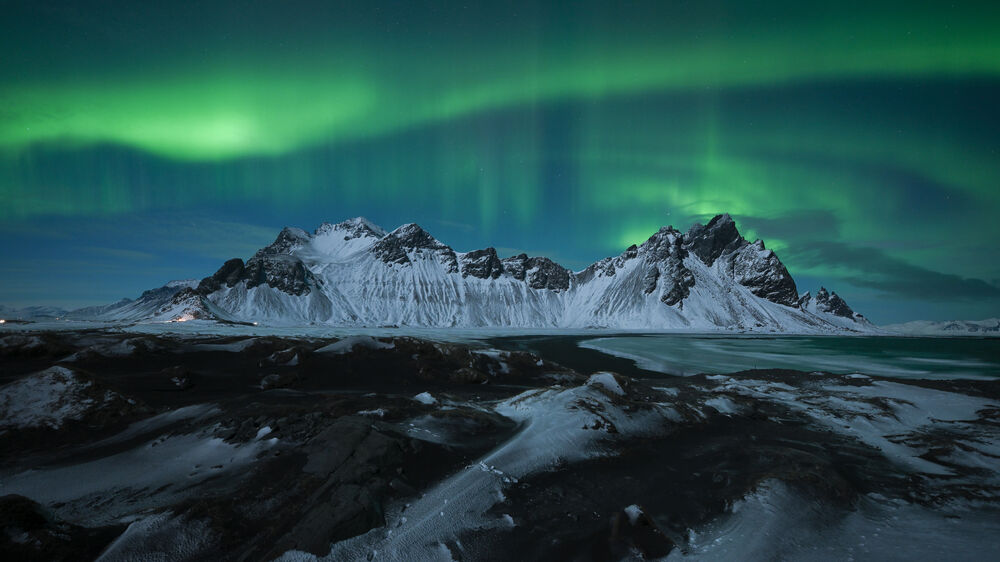
This focusing system also supports working in low-light conditions with a Starlight mode that permits focusing down to -9 EV to greatly benefit astrophotography, concert, and other nighttime shooting applications. Also useful for working in difficult lighting conditions, Backlit AF uses separate pixels on the sensor for AF, allowing these areas to intentionally overexpose for focusing accuracy purposes without impacting the actual exposure of the recorded image.
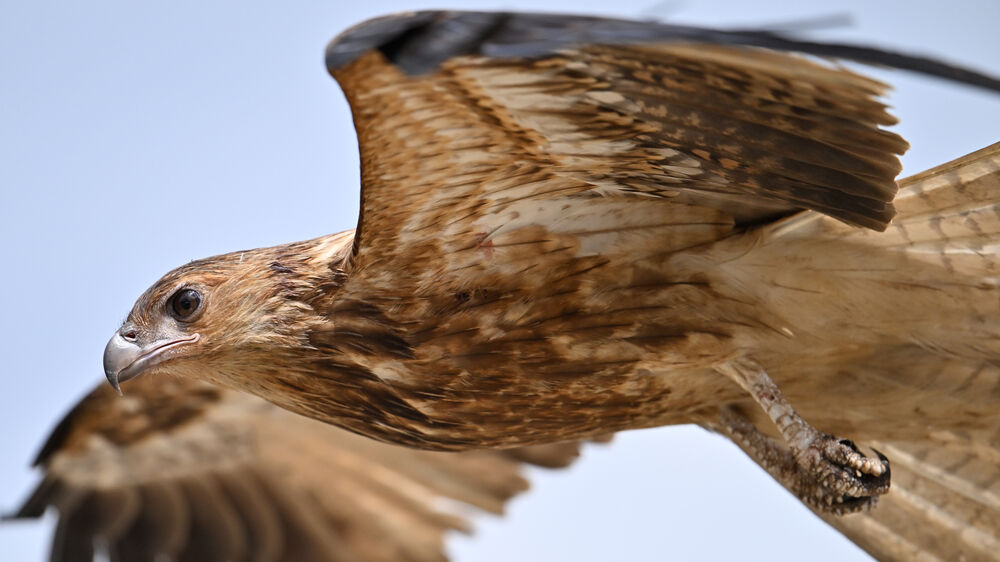
A mainstay focusing mode in DSLRs, which debuted for mirrorless with the Z9, the Z8 also includes 3D Tracking AF that pairs with subject detection to lock onto fast, erratically moving subjects that move parallel and perpendicular to the camera. Additionally, there are three Dynamic-Area AF modes, with a range of focus area sizes, for capturing a broad variety of moving subject types.

Subject Detection with Deep Learning Technology
Utilizing inherited algorithms and deep learning technology from the Z9, including sophisticated Subject Detection, the Z8 can recognize a variety of distinct subject types, ranging from humans to animals to airplanes to bicycles. When working in Auto-Area AF, these subjects will automatically be detected, focused on, and tracked to ensure sharp focus when the subject is moving across the frame.
Eye-Detection AF, specifically, has been tuned for improved accuracy and refined recognition of eyes in the scene, regardless of how small or large they are within the image frame, and can also be used in conjunction with custom Wide-Area AF for different subject shapes and sizes.
Video Powerhouse
Internal 8K60 and 4K 120 Recording
Equally capable for video, the Z8 matches the Z9's recording capabilities here, as well, with a variety of resolutions and frame rates available up to 8K. Using full pixel readout, UHD 8K 30p video can be recorded with continuous shooting possible for approximately 2 hours 5 minutes.
UHD 4K and Full HD recording is also possible in a variety of frame rates, including full-frame 4K recording at up to 120p for slow-motion playback. Using an 8K area, oversampled UHD 4K recording is possible at up to 60p for increased sharpness and detail. Also, high-resolution frame grabs can be recorded in camera from 8K and 4K videos, for producing 33MP or 11MP stills, respectively.
12-Bit N-RAW and ProRes RAW Video
Internal 12-bit raw recording at up to 8.3K 60p in the N-RAW format is supported along with internal ProRES RAW HQ. Raw recording offers greater tonal and color latitude and can improve dynamic range, benefitting color grading needs and post-production flexibility.
- N-RAW is Nikon's own raw recording format that offers impressively small file sizes compared to other raw formats as well as the ability to create MP4 proxies for more efficient previewing or transferring.
- N-RAW recording is available at up to 8.3K at 60p or 24p; 4.1K at up to 120p; 5.3K at up to 60p with a 1.5x crop; and 3.8K at 120p with a 2.3x crop.
- ProRes RAW recording is also available at up to 4.1K and 60p.
ProRes and H.265 10-Bit Recording
Internal recording is also supported with 10-bit color and 4:2:2 sampling in the ProRes 422 HQ and H.265 codecs, and H.264 and 4:2:0 color can be used depending on workflow needs. For more latitude when color grading in post, there is also a 10-bit N-Log setting as well as a Flat color profile. Additionally, HLG (Hybrid Log Gamma) can be used for creating HDR-ready content straight from the camera.
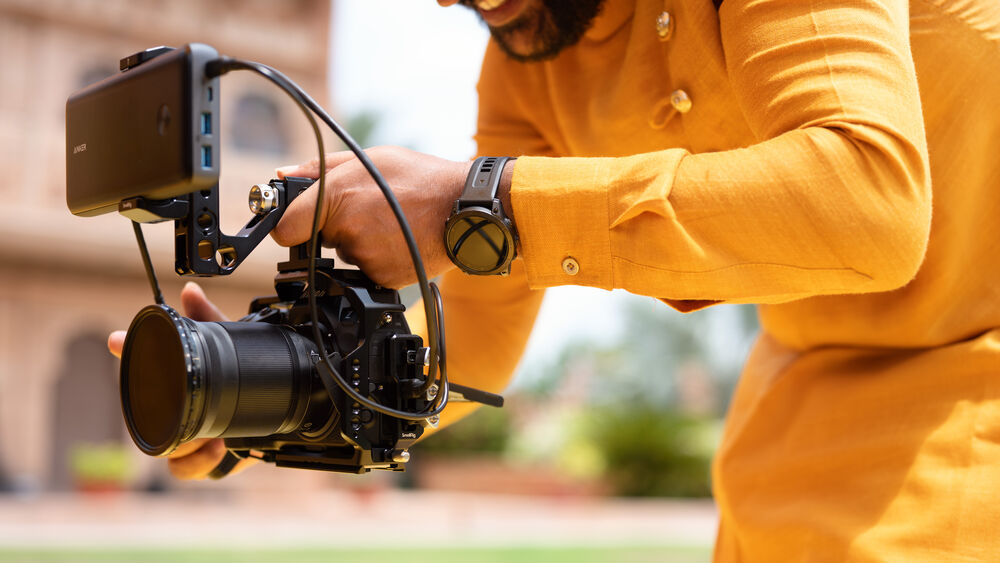
Recording Support
Aiding the impressive recording specs, the Z8 also incorporates a variety of useful recording tools and functions for use in productions:
- Red REC frame indicator on EVF and LCD during recording to easily recognize when recording is being captured.
- Dedicated video info display indicates various recording settings, such as frame size, frame rate, audio settings, codec, bit depth, and HDMI output settings. Some of these settings will also be visible on the camera's top control panel.
- Focus peaking and zebra stripes are visual aids to help achieve sharp focus and accurate exposure.
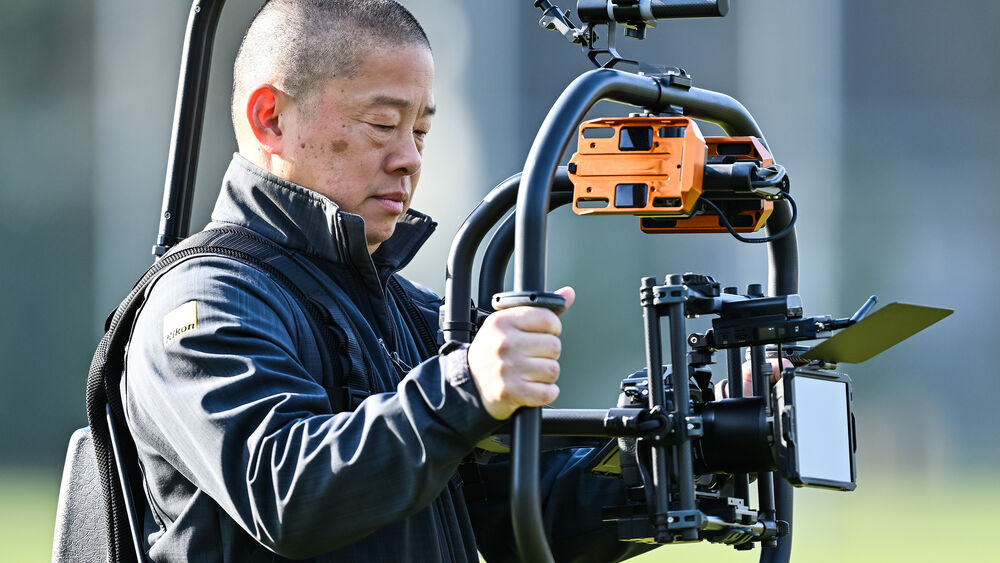
- Waveform monitor for realtime exposure analysis.
- Fine ISO control in Manual mode for adjusting exposure in 1/6-stop increments.
- Fast AF-ON function can be assigned to Fn buttons; it is now possible to assign two different AF speeds to different buttons.
- Slow shutter speed video is supported, slower than 1/frame rate, for working in extreme low-light conditions or for creating intentionally blurred effects.
- Timecode linking is possible when working with an optional timecode generator.
- Complementing the video capabilities, the Z8 also supports 24-bit linear PCM sound recording and offers compatibility with external XLR microphones via the optional Tascam CA-XLR2d-AN digital adapter.
A Smaller Professional Body Design

Sleek, Modular, and Durable Construction
- Deemed the true successor to the D850 DSLR and the smaller follow-up to the flagship Z9, the Z8 hits a sweet spot in terms of size and performance. It is 30% smaller than the Z9 and 15% smaller than the D850.
- Compared to the Z9, with its built-in vertical grip, the Z8 takes on a more modular design, allowing you to keep it small for day-to-day shooting or pair it with the optional MB-N12 Power Battery Pack grip for improved ergonomics when shooting vertical and better battery life. Also, the smaller, lighter design makes the Z8 an ideal candidate for rigging or use on a gimbal for video use.
- Dual card slots—one CFexpress Type B slot and one UHS-II SD slot—allow for flexible file saving. The CFx slot is suitable for data-intensive applications, like 8K recording and high-speed burst shooting, while the SD slot retains compatibility with the popular storage format. Additionally, the CFx B slot is also compatible with XQD memory cards.

- Built using eco-friendly Seerebo carbon fiber and robust magnesium alloy, the Z8 manages to be both durable and lightweight, weighing just 2 lb.
- Premium weather sealing protects against dust and moisture for confident use in harsh climates.
- Included EN-EL15c battery offers approximately 340 frames per charge when primarily using the viewfinder or 370 shots per charge when primarily using the LCD monitor. The Z8 is also compatible with other EN-EL15-series batteries.
- In-body Vibration Reduction now supports Synchro VR to achieve up to 6 stops of camera shake compensation when used with select Z lenses.
- Helping to cut down on dust reaching the sensor, the Z8 incorporates a sensor shield that protects the sensor surface when changing lenses. For additional dust prevention, there is also a dual electro-conductive and fluorine coating on the optical filter covering the sensor.
- Backlit buttons offer easier navigation and button recognition when working in low-light conditions.
Real-Live Viewfinder
- Real-Live Viewfinder is an advanced EVF utilizing a 3.69m-dot OLED panel with adjustable luminance up to 3000 cd/m2 for clear visibility in bright conditions. This EVF also works in conjunction with dual-stream technology for blackout-free viewing when shooting continuously and it features a high fps function, which ups the EVF's refresh rate to 120 fps for smoother, lifelike viewing.

Four-Axis Tilting LCD
- Like the Z9, the Z8 incorporates a unique 3.2" 2.1m-dot four-axis tilting touchscreen LCD that better supports working from high and low angles, regardless if shooting in the horizontal or vertical orientation. This screen's four-way tilting design allows for easier viewing from a variety of positions and the user interface orientation will also shift depending on how the camera is held.
Versatile Connectivity
Matching the professional build quality, the Z8 is fitted with a variety of connectivity options to suit various workflow needs:
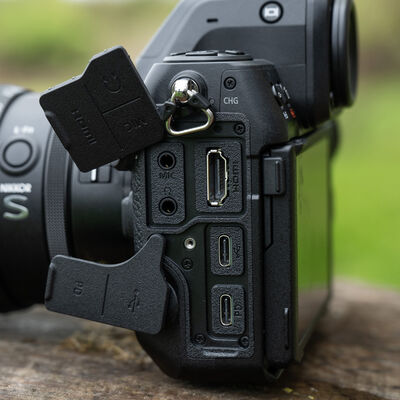
- Full-size HDMI port for outputting video to an external recorder or monitor
- 3.5mm headphone and microphone ports for attaching an external microphone and for on-board audio monitoring
- Two USB-C ports: one supports file transfers and tethering and the second is dedicated to power delivery and battery charging
- USB-C communication terminal supports USB-LAN connectivity when paired with an optional USB-C to Ethernet adapter. This enables a 1000BASE-T wired LAN connection for transferring files over FTP
- 10-pin port offers wide accessories and remote connectivity
- Bluetooth and Wi-Fi (2.4 and 5 GHz) permit wireless transferring of files, remote camera control via a mobile device, and works in conjunction with the NX Mobile Air app for file management
Nikon Z8 Overview
Key Features
- 45.7MP FX-Format Stacked CMOS Sensor
- Lightweight Design, 30% Smaller than Z9
- 8.3K 60p N-RAW, 4.1K 60p ProRes RAW
- 8K30p and 4K120p Video, 10-Bit Internal
- Up to 20 fps Raw, 30 fps JPEG Shooting
- 493-Point AF, AI-Based Subject Detection
- Blackout-Free Real Live Viewfinder
- 3.2" 4-Axis Tilting Touchscreen LCD
- CFx Type B & SD Memory Card Slots
- NIKKOR Z 24-120mm f/4 S Lens
Compact, Lightweight, Powerful
Built using flagship DNA, the Nikon Z8 is a compact, lightweight camera housing much of the technology from the Z9 but in a sleeker, more portable package. Dubbed the ultimate hybrid camera, the Z8 features the same proven sensor, processing, and AF capabilities of the flagship with a new body design that better suits gimbal use, event shooting, and other handheld applications.
Flagship Sensor and Processing

45.7MP Stacked BSI CMOS Sensor
Featuring the same sensor that debuted in the Z9, the FX-format 45.7MP BSI stacked CMOS sensor offers a useful combination of resolution, fast readout speeds, impressive clarity, and minimal noise. The stacked design contributes to reduced rolling shutter while the BSI designation ensures improved noise levels when working at the top end of the extended ISO 32-102400 range. Also, the 45.7MP resolution and full-frame sensor size hit a sweet spot that benefits photographers working in detail-oriented genres as well as enables recording video at resolutions up to 8K.
EXPEED 7 Image Processor
Complementing the sensor is the EXPEED 7 processing engine, which offers speeds approximately 10x faster than a Z7 II. This engine works in conjunction with the stacked sensor design to realize impressively fast AF speeds, burst shooting rates, a high buffer capacity, fluid video performance, and quick all-around handling.

- Top continuous shooting speeds of 20 fps when shooting in raw, 30 fps when shooting in JPEG, 60 fps when shooting 19MP JPEGs using a DX area, and an impressive 120 fps shooting rate when recording 11MP stills, with all rates supporting full AF/AE performance.
- Able to buffer over 1000 raw images in a burst, meaning raw image sequences can be recorded for approximately 50 seconds continuously. Also, during playback, you can skip to the first shot of a given burst to expedite the on-camera review process.

- Pre-Release Capture helps make decisive moment shots easier by recording frames in a burst for up a second prior to actually releasing the shutter. When this feature is activated, burst shooting will commence when the shutter is half-pressed and the buffer will retain up to a second's worth of frames prior to fully pressing the shutter.
- Electronic shutter affords a top shutter speed of 1/32,000 sec for working in the brightest conditions with wider apertures.

- Stacked sensor design reduces rolling shutter distortion so fast-moving subjects, like a golf club, tennis racket, or baseball bat, do not appear distorted when working with shutter speeds up to 1/32,000 sec.
- AF calculations are done at a 120 fps rate to keep up with fast continuous shooting speeds.
- High Efficiency RAW file format maintains image quality akin to uncompressed raw files but with file sizes approximately 30% smaller for faster reading/writing to the memory card.
- Stills can also be saved in the HEIF file format; a useful evolution from JPEG, this 10-bit format offers 1 billion more colors for greater realism and dynamic range when viewed on HLG-compatible displays while still retaining the small file size as a JPEG.
- Motion Blend Retouch feature can be used to produce an in-camera composite that depicts a series of subject movements within a single frame.
- Long Exposure display includes a live exposure timer on the rear LCD, along with the ability to dim the viewfinder to better preserve your night-adjusted vision.

Electronic Shutter-Only Design
Relying on the speed and stacked design of the sensor, the Z8 completely forgoes a mechanical shutter and uses just an electronic shutter for all capture modes. The speed of the sensor enables recording at up to 1/32,000 sec and the stacked structure reduces motion distortion for accurate depiction of fast-moving subjects, like golf clubs, baseball bats, and automobiles. Also, despite the absence of a mechanical shutter, flash sync up to 1/200 sec. is still supported as well as high speed sync functions.
By removing the mechanical shutter, the Z8 can also operate completely silently and there is no worry over mechanical shutter wear or breakdown. A shutter release sound can be added for awareness when a photo is being taken, and the volume can be adjusted to suit different working scenarios.

More Beautiful Portraits
Perfect for portraits, the Z8 improves on the sensor's inherent capabilities with a series of processing tools and shooting functions to improve portraits:
- Fine-tune hue and brightness while shooting for more precise control while shooting.
- Skin softening can be used on up to three subjects in a shot and slightly blurs the skin for a more pleasing texture while still retaining essential sharpness on eyes and hair.
- Manual white balance control is more intuitive when making adjustments and Auto WB has also been optimized for human subjects.
Fast and Intelligent AF
493-Point Phase-Detection AF
Covering the full sensor area, the Z8 uses the flagship 493-point phase-detection AF system to realize fast and accurate focusing performance. This system is benefitted by the high-speed communication of the Z interface along with the speed of the sensor that enables AF readings to occur at up to 120 fps.

This focusing system also supports working in low-light conditions with a Starlight mode that permits focusing down to -9 EV to greatly benefit astrophotography, concert, and other nighttime shooting applications. Also useful for working in difficult lighting conditions, Backlit AF uses separate pixels on the sensor for AF, allowing these areas to intentionally overexpose for focusing accuracy purposes without impacting the actual exposure of the recorded image.

A mainstay focusing mode in DSLRs, which debuted for mirrorless with the Z9, the Z8 also includes 3D Tracking AF that pairs with subject detection to lock onto fast, erratically moving subjects that move parallel and perpendicular to the camera. Additionally, there are three Dynamic-Area AF modes, with a range of focus area sizes, for capturing a broad variety of moving subject types.

Subject Detection with Deep Learning Technology
Utilizing inherited algorithms and deep learning technology from the Z9, including sophisticated Subject Detection, the Z8 can recognize a variety of distinct subject types, ranging from humans to animals to airplanes to bicycles. When working in Auto-Area AF, these subjects will automatically be detected, focused on, and tracked to ensure sharp focus when the subject is moving across the frame.
Eye-Detection AF, specifically, has been tuned for improved accuracy and refined recognition of eyes in the scene, regardless of how small or large they are within the image frame, and can also be used in conjunction with custom Wide-Area AF for different subject shapes and sizes.
Video Powerhouse
Internal 8K60 and 4K 120 Recording
Equally capable for video, the Z8 matches the Z9's recording capabilities here, as well, with a variety of resolutions and frame rates available up to 8K. Using full pixel readout, UHD 8K 30p video can be recorded with continuous shooting possible for approximately 2 hours 5 minutes.
UHD 4K and Full HD recording is also possible in a variety of frame rates, including full-frame 4K recording at up to 120p for slow-motion playback. Using an 8K area, oversampled UHD 4K recording is possible at up to 60p for increased sharpness and detail. Also, high-resolution frame grabs can be recorded in camera from 8K and 4K videos, for producing 33MP or 11MP stills, respectively.
12-Bit N-RAW and ProRes RAW Video
Internal 12-bit raw recording at up to 8.3K 60p in the N-RAW format is supported along with internal ProRES RAW HQ. Raw recording offers greater tonal and color latitude and can improve dynamic range, benefitting color grading needs and post-production flexibility.
- N-RAW is Nikon's own raw recording format that offers impressively small file sizes compared to other raw formats as well as the ability to create MP4 proxies for more efficient previewing or transferring.
- N-RAW recording is available at up to 8.3K at 60p or 24p; 4.1K at up to 120p; 5.3K at up to 60p with a 1.5x crop; and 3.8K at 120p with a 2.3x crop.
- ProRes RAW recording is also available at up to 4.1K and 60p.
ProRes and H.265 10-Bit Recording
Internal recording is also supported with 10-bit color and 4:2:2 sampling in the ProRes 422 HQ and H.265 codecs, and H.264 and 4:2:0 color can be used depending on workflow needs. For more latitude when color grading in post, there is also a 10-bit N-Log setting as well as a Flat color profile. Additionally, HLG (Hybrid Log Gamma) can be used for creating HDR-ready content straight from the camera.

Recording Support
Aiding the impressive recording specs, the Z8 also incorporates a variety of useful recording tools and functions for use in productions:
- Red REC frame indicator on EVF and LCD during recording to easily recognize when recording is being captured.
- Dedicated video info display indicates various recording settings, such as frame size, frame rate, audio settings, codec, bit depth, and HDMI output settings. Some of these settings will also be visible on the camera's top control panel.
- Focus peaking and zebra stripes are visual aids to help achieve sharp focus and accurate exposure.

- Waveform monitor for realtime exposure analysis.
- Fine ISO control in Manual mode for adjusting exposure in 1/6-stop increments.
- Fast AF-ON function can be assigned to Fn buttons; it is now possible to assign two different AF speeds to different buttons.
- Slow shutter speed video is supported, slower than 1/frame rate, for working in extreme low-light conditions or for creating intentionally blurred effects.
- Timecode linking is possible when working with an optional timecode generator.
- Complementing the video capabilities, the Z8 also supports 24-bit linear PCM sound recording and offers compatibility with external XLR microphones via the optional Tascam CA-XLR2d-AN digital adapter.
A Smaller Professional Body Design

Sleek, Modular, and Durable Construction
- Deemed the true successor to the D850 DSLR and the smaller follow-up to the flagship Z9, the Z8 hits a sweet spot in terms of size and performance. It is 30% smaller than the Z9 and 15% smaller than the D850.
- Compared to the Z9, with its built-in vertical grip, the Z8 takes on a more modular design, allowing you to keep it small for day-to-day shooting or pair it with the optional MB-N12 Power Battery Pack grip for improved ergonomics when shooting vertical and better battery life. Also, the smaller, lighter design makes the Z8 an ideal candidate for rigging or use on a gimbal for video use.
- Dual card slots—one CFexpress Type B slot and one UHS-II SD slot—allow for flexible file saving. The CFx slot is suitable for data-intensive applications, like 8K recording and high-speed burst shooting, while the SD slot retains compatibility with the popular storage format. Additionally, the CFx B slot is also compatible with XQD memory cards.

- Built using eco-friendly Seerebo carbon fiber and robust magnesium alloy, the Z8 manages to be both durable and lightweight, weighing just 2 lb.
- Premium weather sealing protects against dust and moisture for confident use in harsh climates.
- Included EN-EL15c battery offers approximately 340 frames per charge when primarily using the viewfinder or 370 shots per charge when primarily using the LCD monitor. The Z8 is also compatible with other EN-EL15-series batteries.
- In-body Vibration Reduction now supports Synchro VR to achieve up to 6 stops of camera shake compensation when used with select Z lenses.
- Helping to cut down on dust reaching the sensor, the Z8 incorporates a sensor shield that protects the sensor surface when changing lenses. For additional dust prevention, there is also a dual electro-conductive and fluorine coating on the optical filter covering the sensor.
- Backlit buttons offer easier navigation and button recognition when working in low-light conditions.
Real-Live Viewfinder
- Real-Live Viewfinder is an advanced EVF utilizing a 3.69m-dot OLED panel with adjustable luminance up to 3000 cd/m2 for clear visibility in bright conditions. This EVF also works in conjunction with dual-stream technology for blackout-free viewing when shooting continuously and it features a high fps function, which ups the EVF's refresh rate to 120 fps for smoother, lifelike viewing.

Four-Axis Tilting LCD
- Like the Z9, the Z8 incorporates a unique 3.2" 2.1m-dot four-axis tilting touchscreen LCD that better supports working from high and low angles, regardless if shooting in the horizontal or vertical orientation. This screen's four-way tilting design allows for easier viewing from a variety of positions and the user interface orientation will also shift depending on how the camera is held.
Versatile Connectivity
Matching the professional build quality, the Z8 is fitted with a variety of connectivity options to suit various workflow needs:

- Full-size HDMI port for outputting video to an external recorder or monitor
- 3.5mm headphone and microphone ports for attaching an external microphone and for on-board audio monitoring
- Two USB-C ports: one supports file transfers and tethering and the second is dedicated to power delivery and battery charging
- USB-C communication terminal supports USB-LAN connectivity when paired with an optional USB-C to Ethernet adapter. This enables a 1000BASE-T wired LAN connection for transferring files over FTP
- 10-pin port offers wide accessories and remote connectivity
- Bluetooth and Wi-Fi (2.4 and 5 GHz) permit wireless transferring of files, remote camera control via a mobile device, and works in conjunction with the NX Mobile Air app for file management
Nikon NIKKOR Z 24-120mm f/4 S Lens (Nikon Z)
All-in-One Versatility
A truly versatile everyday lens, the NIKKOR Z 24-120mm f/4 S, from Nikon, is a wide-angle to short-telephoto zoom covering an extremely useful range of focal lengths to benefit a variety of applications from landscape to portraiture. The constant f/4 maximum aperture offers consistent performance throughout the zoom range and the lens features an advanced optical design for high sharpness and clarity. As a go-to lens for a majority of needs, this lens also sports a relatively compact and lightweight design.
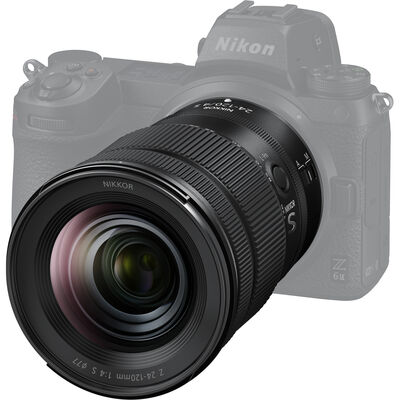
Optical Design
- Featuring a combination of three ED elements, one aspherical ED element, and three aspherical elements, both chromatic and spherical aberrations are effectively eliminated throughout the zoom range for notable sharpness and clarity.
- ARNEO and Nano Crystal Coats are used to prevent ghosting, reflections, and flare in order to realize improved contrast and clarity when working in strong lighting and backlit conditions. The Nano Crystal Coat controls incidental light from a diagonal direction while the ARNEO Coat controls incidental light from a vertical direction.

Autofocus
- Multi-focus system incorporates two separate AF drive units, which are synchronized, to deliver especially fast and accurate focusing throughout the zoom range. This system uses stepping motors, which offer impressively smooth and quiet autofocus performance that is well-suited to both stills and video applications.
- Full-time manual focus override is also possible and an internal focusing design is used, where only the internal lens groups are moved during focusing, to maintain the overall length of the lens during use and to promote faster focusing speeds.
- Dedicated manual focus ring at the rear of the lens for tactile and precise control over the focus position.
- Minimum focusing distance of 1.1', along with a maximum magnification of 0.39x, benefits working with close-up subjects.

Handling and Design
- Programmable Control Ring can be used to control aperture, ISO, or exposure compensation.
- Assignable L.Fn button works in conjunction with camera-based Fn buttons to provide seamless points for quickly changing exposure settings and other functions.
- Dust- and moisture-resistant lens barrel, along with a front fluorine coating, benefits the lens' use in inclement conditions.
FUJIFILM X-T5 Overview
Key Features
- 40MP APS-C X-Trans CMOS 5 HR BSI Sensor
- 4K 120p, 6.2K 30p, FHD 240p 10-Bit Video
- 7-Stop In-Body Image Stabilization
- 425-Point Intelligent Hybrid AF System
- 3.69m-Dot OLED Electronic Viewfinder
- 3" 1.84m-Dot Tilting Touchscreen LCD
- 20 fps E. Shutter, 15 fps Mech. Shutter
- 160MP Pixel Shift Multi-Shot
- Bluetooth and Wi-Fi Connectivity
- ProRes & Blackmagic RAW via HDMI
A portable and powerful multimedia mirrorless camera, the FUJIFILM X-T5 features the newly developed 40MP APS-C X-Trans CMOS 5 HR BSI sensor for simply stunning results. Comparable in size to the original X-T1 and lighter than its predecessor, this camera provides a classic, dial-based layout and cutting-edge technology that includes a seven-stop in-body image stabilization system, Pixel Shift Multi-Shot mode for 160MP files, and action-freezing shutter speeds up to 1/180,000 sec from the electronic shutter. In addition to its versatile suite of stills capabilities, the X-T5 is also a highly capable moviemaking machine, recording up to 6.2K in 4:2:2 10-bit color internally or 12-bit ProRes RAW and Blackmagic RAW via HDMI.
40MP APS-C X-Trans CMOS 5 HR BSI Sensor
Offering the ultimate in image quality, the X-T5 features a 40MP X-Trans 5 HR CMOS sensor in a compact, lightweight body that maximizes functionality and portability. Imaging performance is in no way compromised by the camera's diminutive proportions. Instead, the X-T5's improved image processing algorithm delivers outstanding results and is packed with details right across the native ISO range.
Powerful Video Capabilities
A dynamic camera with powerful video functions, movies can be recorded internally at up to 6.2K at 30p in 4:2:2 10-bit color, plus there's a 4K HQ mode which oversamples 6.2K footage for superior 4K output. This higher video resolution unlocks 2x digital zoom functionality, providing additional in-camera versatility without a noticeable drop in quality.
External Raw Recording
Both F-Log and F-Log2 recording are possible, with the latter providing an expanded dynamic range of 13+ stops. Additionally, 12-bit ProRes RAW and Blackmagic RAW can be output via HDMI to Atomos and Blackmagic devices accordingly.
425-Point Intelligent Hybrid AF System
Featuring outstanding autofocus performance, the X-T5 utilizes 425 phase-detection points and is now sensitive down to -7 EV for working in truly low-light conditions. Also, backed by deep learning, an AI adaptive algorithm means this focusing system is better suited to automatically detect and track animals, athletes, birds, cars, motorcycles, and moving subjects.
In-Body Image Stabilization
Thanks to the camera's in-body image stabilization (IBIS) system, quality-sapping camera shake is minimized. Built-in 5-axis sensor-shift image stabilization helps to minimize the appearance of camera shake by up to 7 stops. This system works in conjunction with most X Series lenses, including non-stabilized ones, and benefits working with slower shutter speeds and when shooting in difficult lighting conditions. Additionally, digital image stabilization can also be used during video recording to further aid in steadying footage, especially when recording handheld.
Pixel Shift Multishot
Utilizing the camera's IBIS system to precisely shift the sensor, Pixel Shift Multishot automatically records 20 separate frames with one press of the shutter release. Resulting files are combined using Pixel Shift Combiner software to quadruple the camera's resolution and produce a detail-rich, 160MP file. Perfect for commercial applications or digital archiving, it's also ideal for any static subject where image quality is of primary importance.
Built for Speed
The X-T5 provides powerful image making performance to ensure it's ready for action, no matter how fast your subject is moving. A top electronic shutter speed of 1/180,000 sec and a maximum mechanical shutter speed of 1/8000 sec will stop any subject in its tracks, while a lag time of just 35 ms gives an almost instantaneous response when the shutter release is pressed. Keep a finger down, and the X-T5 will record images at up to 15 fps with the mechanical shutter, or 20 fps with the electronic shutter. Either way, no important moment will be missed.
Film Simulation Modes
Film Simulation modes allow you to reproduce the look and feel of several of FUJIFILM's film types, including Provia, Velvia, Astia, Classic Chrome, PRO Neg.Std, PRO Neg. Hi, Classic Neg., Nostalgic Neg., Eterna Cinema, Eterna Bleach Bypass, Acros, Acros + Ye Filter, Acros + R Filter, Acros + G Filter, Black & White, Black & White + Ye Filter, Black & White + R Filter, Black & White + G Filter, and Sepia.
Enhanced Body Design
- Large OLED electronic viewfinder features a crisp 3.69m-dot resolution for bright, clear, and detailed eye-level viewing. Additionally, this EVF offers 0.8x magnification for an easy-to-view image that is further enhanced by improved suppression of parallax and distortion compared to its predecessor. The 100 fps refresh rate, meanwhile, allows virtually blackout-free image making.
- Large 3.0" 1.62m-dot LCD touchscreen for intuitive operation and playback, and the tilting design greatly benefits working from high and low shooting angles.
- Utilizing an NP-W235 battery, up to 680 frames can be recorded from a single charge, plus the mechanical shutter guarantees 500,000 actuations, delivering long-term accuracy and reliability.
Connectivity
- Micro-HDMI port for outputting video to an external recorder or monitor.
- USB 3.2 Gen 2 port supports tethering, data transfer, and in-camera battery charging.
- 3.5mm external microphone port for greater control over audio recording.
- PC sync port for flash sync.
- 2.5mm remote port for using wired remote controllers.
- Integrated Bluetooth and Wi-Fi connectivity allows for wirelessly sharing images to a mobile device or to use the device to remotely control the camera.


Fujifilm X-T5 Overview
Key Features
- 40MP APS-C X-Trans CMOS 5 HR BSI Sensor
- 4K 120p, 6.2K 30p, FHD 240p 10-Bit Video
- 7-Stop In-Body Image Stabilization
- 425-Point Intelligent Hybrid AF System
- 3.69m-Dot OLED Electronic Viewfinder
- 3" 1.84m-Dot Tilting Touchscreen LCD
- 20 fps E. Shutter, 15 fps Mech. Shutter
- 160MP Pixel Shift Multi-Shot
- Bluetooth and Wi-Fi Connectivity
- ProRes & Blackmagic RAW via HDMI
A portable and powerful multimedia mirrorless camera, the FUJIFILM X-T5 features the newly developed 40MP APS-C X-Trans CMOS 5 HR BSI sensor for simply stunning results. Comparable in size to the original X-T1 and lighter than its predecessor, this camera provides a classic, dial-based layout and cutting-edge technology that includes a seven-stop in-body image stabilization system, Pixel Shift Multi-Shot mode for 160MP files, and action-freezing shutter speeds up to 1/180,000 sec from the electronic shutter. In addition to its versatile suite of stills capabilities, the X-T5 is also a highly capable moviemaking machine, recording up to 6.2K in 4:2:2 10-bit color internally or 12-bit ProRes RAW and Blackmagic RAW via HDMI.
40MP APS-C X-Trans CMOS 5 HR BSI Sensor
Offering the ultimate in image quality, the X-T5 features a 40MP X-Trans 5 HR CMOS sensor in a compact, lightweight body that maximizes functionality and portability. Imaging performance is in no way compromised by the camera's diminutive proportions. Instead, the X-T5's improved image processing algorithm delivers outstanding results and is packed with details right across the native ISO range.
Powerful Video Capabilities
A dynamic camera with powerful video functions, movies can be recorded internally at up to 6.2K at 30p in 4:2:2 10-bit color, plus there's a 4K HQ mode which oversamples 6.2K footage for superior 4K output. This higher video resolution unlocks 2x digital zoom functionality, providing additional in-camera versatility without a noticeable drop in quality.
External Raw Recording
Both F-Log and F-Log2 recording are possible, with the latter providing an expanded dynamic range of 13+ stops. Additionally, 12-bit ProRes RAW and Blackmagic RAW can be output via HDMI to Atomos and Blackmagic devices accordingly.
425-Point Intelligent Hybrid AF System
Featuring outstanding autofocus performance, the X-T5 utilizes 425 phase-detection points and is now sensitive down to -7 EV for working in truly low-light conditions. Also, backed by deep learning, an AI adaptive algorithm means this focusing system is better suited to automatically detect and track animals, athletes, birds, cars, motorcycles, and moving subjects.
In-Body Image Stabilization
Thanks to the camera's in-body image stabilization (IBIS) system, quality-sapping camera shake is minimized. Built-in 5-axis sensor-shift image stabilization helps to minimize the appearance of camera shake by up to 7 stops. This system works in conjunction with most X Series lenses, including non-stabilized ones, and benefits working with slower shutter speeds and when shooting in difficult lighting conditions. Additionally, digital image stabilization can also be used during video recording to further aid in steadying footage, especially when recording handheld.
Pixel Shift Multishot
Utilizing the camera's IBIS system to precisely shift the sensor, Pixel Shift Multishot automatically records 20 separate frames with one press of the shutter release. Resulting files are combined using Pixel Shift Combiner software to quadruple the camera's resolution and produce a detail-rich, 160MP file. Perfect for commercial applications or digital archiving, it's also ideal for any static subject where image quality is of primary importance.
Built for Speed
The X-T5 provides powerful image making performance to ensure it's ready for action, no matter how fast your subject is moving. A top electronic shutter speed of 1/180,000 sec and a maximum mechanical shutter speed of 1/8000 sec will stop any subject in its tracks, while a lag time of just 35 ms gives an almost instantaneous response when the shutter release is pressed. Keep a finger down, and the X-T5 will record images at up to 15 fps with the mechanical shutter, or 20 fps with the electronic shutter. Either way, no important moment will be missed.
Film Simulation Modes
Film Simulation modes allow you to reproduce the look and feel of several of FUJIFILM's film types, including Provia, Velvia, Astia, Classic Chrome, PRO Neg.Std, PRO Neg. Hi, Classic Neg., Nostalgic Neg., Eterna Cinema, Eterna Bleach Bypass, Acros, Acros + Ye Filter, Acros + R Filter, Acros + G Filter, Black & White, Black & White + Ye Filter, Black & White + R Filter, Black & White + G Filter, and Sepia.
Enhanced Body Design
- Large OLED electronic viewfinder features a crisp 3.69m-dot resolution for bright, clear, and detailed eye-level viewing. Additionally, this EVF offers 0.8x magnification for an easy-to-view image that is further enhanced by improved suppression of parallax and distortion compared to its predecessor. The 100 fps refresh rate, meanwhile, allows virtually blackout-free image making.
- Large 3.0" 1.62m-dot LCD touchscreen for intuitive operation and playback, and the tilting design greatly benefits working from high and low shooting angles.
- Utilizing an NP-W235 battery, up to 680 frames can be recorded from a single charge, plus the mechanical shutter guarantees 500,000 actuations, delivering long-term accuracy and reliability.
Connectivity
- Micro-HDMI port for outputting video to an external recorder or monitor.
- USB 3.2 Gen 2 port supports tethering, data transfer, and in-camera battery charging.
- 3.5mm external microphone port for greater control over audio recording.
- PC sync port for flash sync.
- 2.5mm remote port for using wired remote controllers.
- Integrated Bluetooth and Wi-Fi connectivity allows for wirelessly sharing images to a mobile device or to use the device to remotely control the camera.


FUJIFILM X-T5 Overview
Key Features
- 40MP APS-C X-Trans CMOS 5 HR BSI Sensor
- 4K 60p, 6.2K 30p 4:2:2 10-Bit Video
- 7-Stop In-Body Image Stabilization
- 425-Point Intelligent Hybrid AF System
- 3.69m-Dot OLED Electronic Viewfinder
- 3" 1.84m-Dot Tilting Touchscreen LCD
- 20 fps E. Shutter, 15 fps Mech. Shutter
- 160MP Pixel Shift Multi-Shot
- Bluetooth and Wi-Fi Connectivity
- XF 16-50mm f/2.8-4.8 R LM WR Lens
Pairing the versatile black APS-C mirrorless camera with a powerful standard zoom, this X-T5 Mirrorless Camera with XF 16-50mm f/2.8-4.8 Lens from FUJIFILM provides users with an impressive duo primed for capturing a wide range of high-quality photo and video content. The XF 16-50mm f/2.8-4.8 R LM WR lens provides a 24-76mm full-frame equivalence and complements the X-T5 with its compact design.
FUJIFILM X-T5 Mirrorless Camera (Black)
A portable and powerful multimedia mirrorless camera, the FUJIFILM X-T5 features the newly developed 40MP APS-C X-Trans CMOS 5 HR BSI sensor for simply stunning results. Comparable in size to the original X-T1 and lighter than its predecessor, this camera provides a classic, dial-based layout and cutting-edge technology that includes a seven-stop in-body image stabilization system, Pixel Shift Multi-Shot mode for 160MP files, and action-freezing shutter speeds up to 1/180,000 sec from the electronic shutter. In addition to its versatile suite of stills capabilities, the X-T5 is also a highly capable moviemaking machine, recording up to 6.2K in 4:2:2 10-bit color internally or 12-bit ProRes RAW and Blackmagic RAW via HDMI.
40MP APS-C X-Trans CMOS 5 HR BSI Sensor
Offering the ultimate in image quality, the X-T5 features a 40MP X-Trans 5 HR CMOS sensor in a compact, lightweight body that maximizes functionality and portability. Imaging performance is in no way compromised by the camera's diminutive proportions. Instead, the X-T5's improved image processing algorithm delivers outstanding results and is packed with details right across the native ISO range.
Powerful Video Capabilities
A dynamic camera with powerful video functions, movies can be recorded internally at up to 6.2K at 30p in 4:2:2 10-bit color, plus there's a 4K HQ mode which oversamples 6.2K footage for superior 4K output. This higher video resolution unlocks 2x digital zoom functionality, providing additional in-camera versatility without a noticeable drop in quality.
External Raw Recording
Both F-Log and F-Log2 recording are possible, with the latter providing an expanded dynamic range of 13+ stops. Additionally, 12-bit ProRes RAW and Blackmagic RAW can be output via HDMI to Atomos and Blackmagic devices accordingly.
425-Point Intelligent Hybrid AF System
Featuring outstanding autofocus performance, the X-T5 utilizes 425 phase-detection points and is now sensitive down to -7 EV for working in truly low-light conditions. Also, backed by deep learning, an AI adaptive algorithm means this focusing system is better suited to automatically detect and track animals, athletes, birds, cars, motorcycles, and moving subjects.
In-Body Image Stabilization
Thanks to the camera's in-body image stabilization (IBIS) system, quality-sapping camera shake is minimized. Built-in 5-axis sensor-shift image stabilization helps to minimize the appearance of camera shake by up to 7 stops. This system works in conjunction with most X Series lenses, including non-stabilized ones, and benefits working with slower shutter speeds and when shooting in difficult lighting conditions. Additionally, digital image stabilization can also be used during video recording to further aid in steadying footage, especially when recording handheld.
Pixel Shift Multishot
Utilizing the camera's IBIS system to precisely shift the sensor, Pixel Shift Multishot automatically records 20 separate frames with one press of the shutter release. Resulting files are combined using Pixel Shift Combiner software to quadruple the camera's resolution and produce a detail-rich, 160MP file. Perfect for commercial applications or digital archiving, it's also ideal for any static subject where image quality is of primary importance.
Built for Speed
The X-T5 provides powerful image making performance to ensure it's ready for action, no matter how fast your subject is moving. A top electronic shutter speed of 1/180,000 sec and a maximum mechanical shutter speed of 1/8000 sec will stop any subject in its tracks, while a lag time of just 35 ms gives an almost instantaneous response when the shutter release is pressed. Keep a finger down, and the X-T5 will record images at up to 15 fps with the mechanical shutter, or 20 fps with the electronic shutter. Either way, no important moment will be missed.
Film Simulation Modes
Film Simulation modes allow you to reproduce the look and feel of several of FUJIFILM's film types, including Provia, Velvia, Astia, Classic Chrome, PRO Neg.Std, PRO Neg. Hi, Classic Neg., Nostalgic Neg., Eterna Cinema, Eterna Bleach Bypass, Acros, Acros + Ye Filter, Acros + R Filter, Acros + G Filter, Black & White, Black & White + Ye Filter, Black & White + R Filter, Black & White + G Filter, and Sepia.
Enhanced Body Design
- Large OLED electronic viewfinder features a crisp 3.69m-dot resolution for bright, clear, and detailed eye-level viewing. Additionally, this EVF offers 0.8x magnification for an easy-to-view image that is further enhanced by improved suppression of parallax and distortion compared to its predecessor. The 100 fps refresh rate, meanwhile, allows virtually blackout-free image making.
- Large 3.0" 1.84m-dot LCD touchscreen for intuitive operation and playback, and the tilting design greatly benefits working from high and low shooting angles.
- Utilizing an NP-W235 battery, up to 680 frames can be recorded from a single charge, plus the mechanical shutter guarantees 500,000 actuations, delivering long-term accuracy and reliability.
Connectivity
- Micro-HDMI port for outputting video to an external recorder or monitor.
- USB 3.2 Gen 2 port supports tethering, data transfer, and in-camera battery charging.
- 3.5mm external microphone port for greater control over audio recording.
- PC sync port for flash sync.
- 2.5mm remote port for using wired remote controllers.
- Integrated Bluetooth and Wi-Fi connectivity allows for wirelessly sharing images to a mobile device or to use the device to remotely control the camera.
FUJIFILM XF 16-50mm f/2.8-4.8 R LM WR Lens
All-Encompassing Range
Well-suited for countless shooting scenarios, the XF 16-50mm f/2.8-4.8 R LM WR Lens from FUJIFILM offers striking image quality and a broad zoom range. A full-frame equivalence of 24-76mm is given, making this lens ideal for general shooters who regularly capture various subjects. A bright maximum f/2.8 aperture allows shooting in dim conditions and also provides flattering bokeh for portraits and detail shots.
Lens Construction
Featuring an internal zooming mechanism, the XF 16-50mm f/2.8-4.8 maintains an overall compact build. When paired with a travel-friendly camera body, such as the X-T50, an optimal setup is created that you can take anywhere without fatigue. The optical design includes three extra-low dispersion and three aspherical elements to reduce aberrations, create sharper images, and allow for a lighter weight. Additionally, this lens is weather resistant, increasing its resilience while out in the field.
Linear Motor AF System
Driving lens focusing is a linear AF motor that ensures rapid and quiet performance with impressive tracking and subject detection, which benefits still shooting and video capturing alike.
Additional Lens Features
- 58mm filter thread
- Minimum focusing distance: 9.45"
- Rounded 9-blade diaphragm


Panasonic Lumix S5 Mirrorless Camera with 20-60mm Lens
Key Features
- 24.2MP Full-Frame CMOS Sensor
- UHD 4K60 Video,10-Bit Internal Recording
- V-Log, HDR, and Dual Native ISO
- 2.36m-Dot 0.74x-Magnification OLED LVF
- 3.0" 1.84m-Dot Free-Angle Touchscreen
- Contrast-Detect 225-Area DFD AF System
- 5-Axis Sensor-Shift Image Stabilization
- ISO 100-51200, up to 7 fps Shooting
- 96MP High-Res Mode, Dual SD Card Slots
- Lumix S 20-60mm f/3.5-5.6 Lens
Well-rounded, lightweight, and sleek, the Panasonic Lumix S5 meshes capable video and photo capabilities with a portable body design. Featuring a full-frame 24.2MP CMOS sensor, the S5 is distinguished by its UHD 4K60 10-bit internal recording, Dual Native ISO, and wide 14+-stop dynamic range. Beyond video, it caters to a versatile range of stills applications with 7 fps continuous shooting, ISO 100-51200 native range, and even a 96MP High-Res Shot mode. Regardless if working with photo or video, the S5 maintains a quick and accurate 225-area DFD autofocus system with refined subject tracking, as well as 5-axis sensor-shift image stabilization to minimize the appearance of camera shake.
In terms of physical design, the S5 borrows elements from the larger S1-series of cameras but has a smaller footprint and lighter weight profile for improved portability. The S5 incorporated a 2.36m-dot OLED electronic viewfinder and a free-angle 3.0" 1.84m-dot touchscreen LCD, and it has built-in Wi-Fi and Bluetooth for wireless connectivity. Dual SD memory card slots are featured, too, for flexible file storage and the body also has a splash- and dust-sealed design for working in trying conditions.
Panasonic Lumix S5 Mirrorless Camera
Well-rounded, lightweight, and sleek, the Panasonic Lumix S5 meshes capable video and photo capabilities with a portable body design. Featuring a full-frame 24.2MP CMOS sensor, the S5 is distinguished by its UHD 4K60 10-bit internal recording, Dual Native ISO, and wide 14+-stop dynamic range. Beyond video, it caters to a versatile range of stills applications with 7 fps continuous shooting, ISO 100-51200 native range, and even a 96MP High-Res Shot mode. Regardless if working with photo or video, the S5 maintains a quick and accurate 225-area DFD autofocus system with refined subject tracking, as well as 5-axis sensor-shift image stabilization to minimize the appearance of camera shake.
In terms of physical design, the S5 borrows elements from the larger S1-series of cameras but has a smaller footprint and lighter weight profile for improved portability. The S5 incorporated a 2.36m-dot OLED electronic viewfinder and a free-angle 3.0" 1.84m-dot touchscreen LCD, and it has built-in Wi-Fi and Bluetooth for wireless connectivity. Dual SD memory card slots are featured, too, for flexible file storage and the body also has a splash- and dust-sealed design for working in trying conditions.
24.2MP Full-Frame CMOS Sensor and Venus Engine
Featuring a full-frame 24.2MP CMOS sensor and an updated Venus Engine, the S5 balances high sensitivity, a wide dynamic range, and speed. The sensor-processor combination enables a useful ISO 100-51200 range, which can be expanded to ISO 50-204800, to suit working in a variety of lighting conditions. For working with fast-moving subjects, the S5 also enables full-res shooting at up to 7 fps with AF-S or 6 fps with AF-C, or up to an impressive 60 fps continuous shooting when using 6K or 4K PHOTO modes.
UHD 4K HDR Video Recording
In addition to stills, the S5 also sports highly capable video recording assets, including full-frame UHD 4K30p internal recording with 4:2:2 10-bit color and UHD 4K60p recording using an APS-C sensor area and 4:2:0 10-bit color. Full HD recording at 60 fps, as well as 4K at 30 fps, is also supported with 8-bit color and no recording time limits. Also, high-speed recording is possible, up to Full HD at 180 fps, and anamorphic recording is also available.
Borrowing from Panasonic's broadcast line of video cameras, Dual Native ISO helps to achieve a balanced combination of low noise and high sensitivity to better suit working in a variety of lighting conditions. Two dedicated circuits are provided for each pixel: a Low ISO circuit provides base sensitivities of ISO 100 for normal use, ISO 640 when V-Log is applied, ISO 400 when HLG is applied, and ISO 200 when Cinelike D2/V2 is applied; a Low Noise circuit provides base sensitivities of ISO 640 for normal use, ISO 4000 when V-Log is applied; ISO 2500 when HLG is applied, and ISO 1250 when Cinelike D2/V2 is applied.
Optimizing your recording for post-production color adjustment, the S5 also features a pair of gamma settings suited to capturing a wide dynamic range. V-Log has been pre-installed on this camera and is used to capture a flat, neutral gamma curve and an equivalent 14+ stops of dynamic range, making it well-suited for grading. Additionally, a High Dynamic Range mode, and Hybrid Log Gamma, can be used to record greater detail in both the shadow and highlight regions of a scene. Additional picture styles are available to provide a more gradable image, such as Cinelike V2 and Cinelike D2, as well as an in-camera LUT to make monitoring easier. Additionally, recording to an optional external recorder is possible, via the HDMI Type D port, and support for an external microphone and headphones are also available via dedicated 3.5mm jacks.
Body Design
- Used in conjunction with other members of the L-Mount Alliance, the L lens mount is a versatile interface with a mount diameter of 51.6mm and a flange distance of 20mm for working with a broad range of optics.
- High-resolution 2.36m-dot OLED EVF offers a clear 0.74x magnification along with a smooth 60 fps or 120 fps changeable refresh rate.
- Rear 3.0" 1.84m-dot LCD is a bright, clear means for live view shooting as well as playback and menu navigation. The screen features a free-angle design to suit working from high, low, and front-facing angles, and its touchscreen design affords intuitive settings control.
- Durable, weather-sealed construction is splash and dust-resistant to accommodate working in harsh weather conditions and trying environments.
- Dual SD memory card slots—one UHS-II-compatible slot, one UHS-I-compatible slot—offer improved flexibility for image storage, allowing you to segregate raw and JPEG files to different cards, save duplicate files to both cards, or simply double your storage space with overflow recording.
- A USB Type-C port allows for fast file transferring as well as high-speed in-camera battery charging. Additionally, an HDMI Type D port benefits video applications, a 2.5mm port can be used with the optional DMW-RS2 Remote Shutter, and 3.5mm microphone and headphone jacks suit advanced audio recording needs.
- DMW-BLK22 rechargeable lithium-ion battery is rated for approximately 440 shots per charge when working with the rear monitor, 470 shots per charge with the EVF, and 1500 shots per charge when Power Save LVF mode is on.
- High-precision shutter mechanism offers a top mechanical speed of 1/8000 sec and a flash sync speed of 1/250 sec.
Sensor-Shift Image Stabilization
Helping to achieve the utmost sharpness when photographing handheld, Dual I.S. 2 combines the S5's 5 stop-rated 5-axis sensor-shift image stabilization technology with lens-based 2-axis image stabilization to compensate for a broader range of movement types to render sharper, clearer imagery. Dual I.S. 2 requires the use of compatible Lumix lenses featuring O.I.S. This stabilization system is able to compensate for approximately 6.5 stops of camera shake.
DFD Autofocus System
For accelerated autofocus performance, the DFD (Depth-From-Defocus) technology quickly calculates the distance to subjects and adjusts the focusing position in as little as 0.08 seconds, with sensor and lens communication occurring at rates up to 480 fps. This contrast-detection type focus method benefits both still and video recording modes, as well as subject tracking applications, using Advanced AI Technology, where subject type, color, size, and motion vectors are used to intelligently lock-onto the moving subjects and ensure precise focus. When working with portrait subjects, face, eye, head, body, and animal detection capabilities make it easier to prioritize focusing on specific areas of the subject. The focusing sensitivity and speed can be adjusted to further improve performance with certain subjects. It also features 225 AF areas, which provide excellent control over where the camera will focus. Additionally, supporting working in low-light conditions, a Low Light AF feature enables accurate AF performance down to -6 EV.
Benefitting manual focus operation, focus peaking is available that highlights bright edges of contrast with a colored outline for quickly recognizing your focus point, as well as Touch MF Assist for touch-to-focus operation. Other AF features include an AF Point Scope setting that temporarily magnifies the subject by 3x to 10x for confirmation of the focus position and a custom selectable AF zone for Multi AF / Custom Multi AF.
6K and 4K PHOTO
Utilizing the S5's video recording capabilities, a trio of still shooting modes are available for recording continuous 3:2 or 4:3 8MP stills at a 60 or 30 fps shooting rate or 18MP stills at a 30 fps shooting rate:
- Burst: This mode will allow you to continuously record, making it ideal for instances where you need a fast frame rate in order to capture the best moment.
- Pre-Burst: This mode is ideal for times when you're unsure of the critical moment to press the shutter button and will record images one second prior to and one second after pressing the shutter button in order to give you 60 frames to choose from.
- Burst (S/S): This mode most closely follows the video recording process, and allows you to playback your video, pause at the chosen moment, and use the shutter button to mark a chosen frame from the video and save it as a single 8 or 18MP frame.
Bluetooth and Wi-Fi
Bluetooth Low Energy (4.2) provides constant connection between your smartphone or table and the camera with minimal power consumption. For more robust wireless activities, IEEE 802.11ac and b/g/n support is also available for faster transmission and more fluid remote control and monitoring.
Complementing the camera's wireless connectivity, Lumix Sync is an iOS and Android app designed to pair with the camera for smartphone or tablet-based remote shooting control and wireless image transferring.
Other Camera Features
- By using sensor-shift stabilization technology, the S5 features a High Resolution mode to capture and compile eight separate exposure to create a single 96MP raw or JPEG file. Suitable for static subjects and when working on a tripod, this mode creates a more highly detailed and color accurate image than a single shot alone can produce and produces an image with a 12000 x 8000-pixel resolution.
- HLG Photo mode offers increased dynamic range for improved detail in shadow and highlight regions of the image. When working in HLG Photo mode, images can be saved as an HSP file in either 4K or full resolution, in addition to JPEG and raw formats, for vivid playback on 4K televisions.
- In addition to conventional 3:2, 4:3, 1:1, and 16:9 ratios, photos can also be recorded in 65:24 and 2:1 panoramic formats.
- Helping to contain bright highlights, Highlight Weighted Metering mode prioritizes highlight values when making an exposure metering in order to prevent scenes from blowing out.
- Offering more versatility than standard Auto White Balance (AWB), an AWBw setting will retain a reddish warm tint while AWBc offers a cooler, bluish tint.
- Photo Style modes: Standard, Vivid, Natural, Flat, Landscape, Portrait, Monochrome, L. Monochrome, L. Monochrome D, Cinelike D, Cinelike V, Like709, Standard (HLG), Monochrome (HLG), Like2100, and My Photo Style.
Panasonic DC-S5 Overview
Key Features
24.2MP Full-Frame CMOS Sensor
- UHD 4K60 Video,10-Bit Internal Recording
- V-Log, HDR, and Dual Native ISO
- 2.36m-Dot 0.74x-Magnification OLED LVF
- 3.0" 1.84m-Dot Free-Angle Touchscreen
- Contrast-Detect 225-Area DFD AF System
- 5-Axis Sensor-Shift Image Stabilization
- ISO 100-51200, up to 7 fps Shooting
- 96MP High-Res Mode, Dual SD Card Slots
Well-rounded, lightweight, and sleek, the Panasonic Lumix S5 meshes capable video and photo capabilities with a portable body design. Featuring a full-frame 24.2MP CMOS sensor, the S5 is distinguished by its UHD 4K60 10-bit internal recording, Dual Native ISO, and wide 14+-stop dynamic range. Beyond video, it caters to a versatile range of stills applications with 7 fps continuous shooting, ISO 100-51200 native range, and even a 96MP High-Res Shot mode. Regardless if working with photo or video, the S5 maintains a quick and accurate 225-area DFD autofocus system with refined subject tracking, as well as 5-axis sensor-shift image stabilization to minimize the appearance of camera shake.
In terms of physical design, the S5 borrows elements from the larger S1-series of cameras but has a smaller footprint and lighter weight profile for improved portability. The S5 incorporated a 2.36m-dot OLED electronic viewfinder and a free-angle 3.0" 1.84m-dot touchscreen LCD, and it has built-in Wi-Fi and Bluetooth for wireless connectivity. Dual SD memory card slots are featured, too, for flexible file storage and the body also has a splash- and dust-sealed design for working in trying conditions.
24.2MP Full-Frame CMOS Sensor and Venus Engine
Featuring a full-frame 24.2MP CMOS sensor and an updated Venus Engine, the S5 balances high sensitivity, a wide dynamic range, and speed. The sensor-processor combination enables a useful ISO 100-51200 range, which can be expanded to ISO 50-204800, to suit working in a variety of lighting conditions. For working with fast-moving subjects, the S5 also enables full-res shooting at up to 7 fps with AF-S or 6 fps with AF-C, or up to an impressive 60 fps continuous shooting when using 6K or 4K PHOTO modes.
UHD 4K HDR Video Recording
In addition to stills, the S5 also sports highly capable video recording assets, including full-frame UHD 4K30p internal recording with 4:2:2 10-bit color and UHD 4K60p recording using an APS-C sensor area and 4:2:0 10-bit color. Full HD recording at 60 fps, as well as 4K at 30 fps, is also supported with 8-bit color and no recording time limits. Also, high-speed recording is possible, up to Full HD at 180 fps, and anamorphic recording is also available.
Borrowing from Panasonic's broadcast line of video cameras, Dual Native ISO helps to achieve a balanced combination of low noise and high sensitivity to better suit working in a variety of lighting conditions. Two dedicated circuits are provided for each pixel: a Low ISO circuit provides base sensitivities of ISO 100 for normal use, ISO 640 when V-Log is applied, ISO 400 when HLG is applied, and ISO 200 when Cinelike D2/V2 is applied; a Low Noise circuit provides base sensitivities of ISO 640 for normal use, ISO 4000 when V-Log is applied; ISO 2500 when HLG is applied, and ISO 1250 when Cinelike D2/V2 is applied.
Optimizing your recording for post-production color adjustment, the S5 also features a pair of gamma settings suited to capturing a wide dynamic range. V-Log has been pre-installed on this camera and is used to capture a flat, neutral gamma curve and an equivalent 14+ stops of dynamic range, making it well-suited for grading. Additionally, a High Dynamic Range mode, and Hybrid Log Gamma, can be used to record greater detail in both the shadow and highlight regions of a scene. Additional picture styles are available to provide a more gradable image, such as Cinelike V2 and Cinelike D2, as well as an in-camera LUT to make monitoring easier. Additionally, recording to an optional external recorder is possible, via the HDMI Type D port, and support for an external microphone and headphones are also available via dedicated 3.5mm jacks.
Body Design
- Used in conjunction with other members of the L-Mount Alliance, the L lens mount is a versatile interface with a mount diameter of 51.6mm and a flange distance of 20mm for working with a broad range of optics.
- High-resolution 2.36m-dot OLED EVF offers a clear 0.74x magnification along with a smooth 60 fps or 120 fps changeable refresh rate.
- Rear 3.0" 1.84m-dot LCD is a bright, clear means for live view shooting as well as playback and menu navigation. The screen features a free-angle design to suit working from high, low, and front-facing angles, and its touchscreen design affords intuitive settings control.
- Durable, weather-sealed construction is splash and dust-resistant to accommodate working in harsh weather conditions and trying environments.
- Dual SD memory card slots—one UHS-II-compatible slot, one UHS-I-compatible slot—offer improved flexibility for image storage, allowing you to segregate raw and JPEG files to different cards, save duplicate files to both cards, or simply double your storage space with overflow recording.
- A USB Type-C port allows for fast file transferring as well as high-speed in-camera battery charging. Additionally, an HDMI Type D port benefits video applications, a 2.5mm port can be used with the optional DMW-RS2 Remote Shutter, and 3.5mm microphone and headphone jacks suit advanced audio recording needs.
- DMW-BLK22 rechargeable lithium-ion battery is rated for approximately 440 shots per charge when working with the rear monitor, 470 shots per charge with the EVF, and 1500 shots per charge when Power Save LVF mode is on.
- High-precision shutter mechanism offers a top mechanical speed of 1/8000 sec and a flash sync speed of 1/250 sec.
Sensor-Shift Image Stabilization
Helping to achieve the utmost sharpness when photographing handheld, Dual I.S. 2 combines the S5's 5 stop-rated 5-axis sensor-shift image stabilization technology with lens-based 2-axis image stabilization to compensate for a broader range of movement types to render sharper, clearer imagery. Dual I.S. 2 requires the use of compatible Lumix lenses featuring O.I.S. This stabilization system is able to compensate for approximately 6.5 stops of camera shake.
DFD Autofocus System
For accelerated autofocus performance, the DFD (Depth-From-Defocus) technology quickly calculates the distance to subjects and adjusts the focusing position in as little as 0.08 seconds, with sensor and lens communication occurring at rates up to 480 fps. This contrast-detection type focus method benefits both still and video recording modes, as well as subject tracking applications, using Advanced AI Technology, where subject type, color, size, and motion vectors are used to intelligently lock-onto the moving subjects and ensure precise focus. When working with portrait subjects, face, eye, head, body, and animal detection capabilities make it easier to prioritize focusing on specific areas of the subject. The focusing sensitivity and speed can be adjusted to further improve performance with certain subjects. It also features 225 AF areas, which provide excellent control over where the camera will focus. Additionally, supporting working in low-light conditions, a Low Light AF feature enables accurate AF performance down to -6 EV.
Benefitting manual focus operation, focus peaking is available that highlights bright edges of contrast with a colored outline for quickly recognizing your focus point, as well as Touch MF Assist for touch-to-focus operation. Other AF features include an AF Point Scope setting that temporarily magnifies the subject by 3x to 10x for confirmation of the focus position and a custom selectable AF zone for Multi AF / Custom Multi AF.
6K and 4K PHOTO
Utilizing the S5's video recording capabilities, a trio of still shooting modes are available for recording continuous 3:2 or 4:3 8MP stills at a 60 or 30 fps shooting rate or 18MP stills at a 30 fps shooting rate:
- Burst: This mode will allow you to continuously record, making it ideal for instances where you need a fast frame rate in order to capture the best moment.
- Pre-Burst: This mode is ideal for times when you're unsure of the critical moment to press the shutter button and will record images one second prior to and one second after pressing the shutter button in order to give you 60 frames to choose from.
- Burst (S/S): This mode most closely follows the video recording process, and allows you to playback your video, pause at the chosen moment, and use the shutter button to mark a chosen frame from the video and save it as a single 8 or 18MP frame.
Bluetooth and Wi-Fi
Bluetooth Low Energy (4.2) provides constant connection between your smartphone or table and the camera with minimal power consumption. For more robust wireless activities, IEEE 802.11ac and b/g/n support is also available for faster transmission and more fluid remote control and monitoring.
Complementing the camera's wireless connectivity, Lumix Sync is an iOS and Android app designed to pair with the camera for smartphone or tablet-based remote shooting control and wireless image transferring.
Other Camera Features
- By using sensor-shift stabilization technology, the S5 features a High Resolution mode to capture and compile eight separate exposure to create a single 96MP raw or JPEG file. Suitable for static subjects and when working on a tripod, this mode creates a more highly detailed and color accurate image than a single shot alone can produce and produces an image with a 12000 x 8000-pixel resolution.
- HLG Photo mode offers increased dynamic range for improved detail in shadow and highlight regions of the image. When working in HLG Photo mode, images can be saved as an HSP file in either 4K or full resolution, in addition to JPEG and raw formats, for vivid playback on 4K televisions.
- In addition to conventional 3:2, 4:3, 1:1, and 16:9 ratios, photos can also be recorded in 65:24 and 2:1 panoramic formats.
- Helping to contain bright highlights, Highlight Weighted Metering mode prioritizes highlight values when making an exposure metering in order to prevent scenes from blowing out.
- Offering more versatility than standard Auto White Balance (AWB), an AWBw setting will retain a reddish warm tint while AWBc offers a cooler, bluish tint.
- Photo Style modes: Standard, Vivid, Natural, Flat, Landscape, Portrait, Monochrome, L. Monochrome, L. Monochrome D, Cinelike D, Cinelike V, Like709, Standard (HLG), Monochrome (HLG), Like2100, and My Photo Style.
Firmware Version 2.3
Firmware version 2.3 adds raw video data output over HDMI to Blackmagic Video Assist 12G HDR [5.9K] / [4K] / [Anamorphic (4:3) 3.5K] 12-bit. Raw video data can be output over HDMI to Blackmagic Video Assist 12G HDR to be recorded as Blackmagic RAW.
Panasonic G9 II Overview
Key Features
- 25.2MP Live MOS Micro Four Thirds Sensor
- C4K/4K 60p 4:2:2 10-Bit Video Recording
- 100MP Handheld High-Res Mode
- 5-Axis Sensor Stabilization; Dual I.S. 2
- 3.68m-Dot 0.8x-Magnification OLED LVF
- 3.0" 1.84m-Dot Free-Angle Touchscreen
- 779-Point Phase-Detection AF System
- ISO 25600 and 75 fps Continuous Shooting
- Dual UHS-II SD Slots; Wi-Fi & Bluetooth
- Weather-Sealed Design
Featuring a powerful new sensor and updated processing engine, the Panasonic Lumix G9 II Mirrorless Camera is designed for content creators needing strong stills performance and sophisticated video options. Providing outstanding image quality with rich tonal gradations and excellent color reproduction, this updated camera is equipped with a host of new features to bring your vision to life. The first G-series Lumix camera to offer Phase Hybrid AF for fast and precise autofocusing performance, the G9 II utilizes new AI-powered recognition technology for real-time auto-focus recognition that now recognizes cars, motorcycles, and animal eyes for improved precision in subject recognition. The camera also boasts 75 fps burst shooting with a pre-burst shooting function, which allows you to go back in time up to 1.5 seconds, so you can capture the perfect moment.
25.2MP Digital Live MOS Sensor & Updated Processor
Engineered for high-speed high-resolution imaging, the G9 II comes equipped with a 25.2MP Live MOS Micro Four Thirds sensor and an updated processor to create sharp, detailed stills and cinematic-quality DCI 4K and UHD 4K video. This configuration maximizes resolution while keeping noise to a minimum, delivering realistic color tones and lifelike three-dimensional imagery. Additionally, the G9 II features a handheld high-res mode that compiles multiple exposures to create a single 100MP raw or JPEG file.
4K Video Recording & Video Shooting Assist Functions
- Beyond stills shooting, the G9 II is a highly-capable video camera featuring up to DCI 4K and UHD 4K 60p unlimited recording with 4:2:2 10-bit color, and for videographers who want to create high-resolution slow-motion video, the camera also supports C4K/4K 120p video capture with 4:2:0 10-bit color.
- Frame Indicator function surrounds the frame with a red border as you record, helping you to avoid mistakes such as forgetting to press the record button.
- Simplifying the conversion process from anamorphic videos to vertical videos for social media, the Frame Marker function lets you record video while imagining the angle of view when cropping in post production.
- AWB Lock mode locks in auto white balance to optimize efficiency in situations where the light source is variable indoors due to a mixture of artificial and natural light, or in situations where manual settings based on color temperature would have been required.
- Vertical Position Information function detects the vertical orientation of the video, allowing you to select whether or not to add the vertical position video information from the menu.
- An advanced Focus Transition function automatically shifts the focus point at a constant speed for precise in-focus to out-focus points to give you the impressive rack focus motion picture effect.
Pro-Level Video Versatility
- V-Log has been pre-installed on this camera and is used to capture a flat, neutral gamma curve, and an equivalent 13+ stops of dynamic range provides precise control of color data in post-production, as well as seamless editing with footage shot with VariCam cameras.
- With the Lumix G9 II, recording and playback is supported using an external SSD via USB. Additionally, you have the ability to record ProRes 422 HQ and 4:2:2 10-bit All-Intra directly to an SSD, which combines portability and high capacity for improved efficiency in data backup and post-processing.
- Supports ProRes 422 codec delivering outstanding image quality with low compression. This significantly reduces the load on your computer during post-production and allows non-linear editing without transcoding, streamlining your workflow from start to finish.
- Real Time LUT video recording to streamline your workflow and color grading.
- Supports .CUBE, .VLT, and .TXT formats for V-Log View Assist in real time to approximate the final look of your deliverable.
Phase Hybrid AF System
The G9 II is the first Lumix G-series mirrorless camera to adopt a Phase Hybrid AF system, which offers 779 phase-detection points to provide fast and precise focusing for outstanding AF accuracy. When it comes to autofocus, dependability is the most important thing, and with Phase Detection AF you can fully supplement and track the subject in six different situations that until now had been a challenge for conventional systems to capture. Whether shooting stills or video, this means the G9 II persistently captures the intended subject in difficult scenes involving multiple people in backlit or low-light environments.
5-Axis Sensor-Shift Image Stabilization & Dual I.S. 2
- Helping to achieve the utmost sharpness when working handheld, Dual I.S. 2 combines the camera's 8 stop-rated 5-axis sensor-shift image stabilization technology with lens-based 2-axis image stabilization to compensate for a broader range of movement types to render sharper, clearer imagery. Dual I.S. 2 requires the use of compatible Lumix lenses featuring O.I.S. When working with adapted lenses, you can manually select whether to use the in-camera sensor-shift image stabilization or the lens's optical stabilization.
- Designed for video applications, features Boost I.S., a digital image stabilization technology that aids in creating a stable composition when recording from a fixed perspective.
- New Active I.S. mode that corrects for camera shake when shooting on the move. Additionally, an improved E.I.S system corrects for even larger camera shakes during running situations.
Powerful Photographic Features
- Equipped with several recently-developed pre-programmed settings, the G9 II features the Leica Monochrome photo style, which delivers beautiful creations of black and white scenes.
- Dynamic Range Boost setting creates a real-time HDR composition with a single exposure to rival the image quality of a full-frame camera.
- Live View Composite mode for nighttime photographers capturing starry skies and fireworks.
- Improved pre-burst shooting with 0.5, 1, and 1.5-second settings, allowing you to go back in time to capture those perfect moments.
- Continuous shooting rates of up to 75 fps when using the camera's electronic shutter, or up to 14 fps when using the mechanical shutter
Body Design
- A high-resolution 3.68m-dot OLED EVF offers a clear 0.8x magnification along with a smooth 60 fps or 120 fps changeable refresh rate.
- Large 3.0" 1.84m-dot LCD is a bright, clear means for live view shooting as well as playback and menu navigation. The screen features a free-angle design to suit working from high, low, and front-facing angles, and its touchscreen design affords intuitive settings control.
- An 8-direction joystick and easy-to-use menu design enable quick and efficient operation.
- Dual SD memory card slots - both UHS-II-compatible - offer improved flexibility for image storage, allowing you to designate raw and JPEG files to different cards, save duplicate files to both cards, or simply double your storage space with overflow recording.
- A USB Type-C port allows for fast file transferring as well as high-speed in-camera battery charging. Additionally, an HDMI Type-A port benefits video applications, a 2.5mm port can be used with the optional DMW-RS2 Remote Shutter, and 3.5mm microphone and headphone jacks suit advanced audio recording needs.
- Optional XLR Microphone Adapter that provides XLR inputs and physical controls through a hot shoe connection.
- A robustly-built magnesium alloy body with dust and splash-resistant design accommodates working in harsh weather conditions and trying environments.
Bluetooth & Wi-Fi
Bluetooth Low Energy (5.0) provides a constant connection between your smartphone or tablet with minimal power consumption. For more robust wireless activities, IEEE 802.11b/g/n and 802.11a/n/ac support is also available for faster transmission and more fluid remote control and monitoring. Complementing the camera's wireless connectivity, Lumix Sync is an iOS and Android app designed to pair with the camera for smartphone or tablet-based remote shooting control, wireless image transfer, and updating firmware.
Panasonic G9 II Overview
Key Features
- 25.2MP Live MOS Micro Four Thirds Sensor
- C4K/4K 60p 4:2:2 10-Bit Video Recording
- 100MP Handheld High-Res Mode
- 5-Axis Sensor Stabilization; Dual I.S. 2
- 3.68m-Dot 0.8x-Magnification OLED LVF
- 3.0" 1.84m-Dot Free-Angle Touchscreen
- 779-Point Phase-Detection AF System
- ISO 25600 and 75 fps Continuous Shooting
- Dual UHS-II SD Slots; Wi-Fi & Bluetooth
- Weather-Sealed Design
Featuring a powerful new sensor and updated processing engine, the Panasonic Lumix G9 II Mirrorless Camera is designed for content creators needing strong stills performance and sophisticated video options. Providing outstanding image quality with rich tonal gradations and excellent color reproduction, this updated camera is equipped with a host of new features to bring your vision to life. The first G-series Lumix camera to offer Phase Hybrid AF for fast and precise autofocusing performance, the G9 II utilizes new AI-powered recognition technology for real-time auto-focus recognition that now recognizes cars, motorcycles, and animal eyes for improved precision in subject recognition. The camera also boasts 75 fps burst shooting with a pre-burst shooting function, which allows you to go back in time up to 1.5 seconds, so you can capture the perfect moment.
25.2MP Digital Live MOS Sensor & Updated Processor
Engineered for high-speed high-resolution imaging, the G9 II comes equipped with a 25.2MP Live MOS Micro Four Thirds sensor and an updated processor to create sharp, detailed stills and cinematic-quality DCI 4K and UHD 4K video. This configuration maximizes resolution while keeping noise to a minimum, delivering realistic color tones and lifelike three-dimensional imagery. Additionally, the G9 II features a handheld high-res mode that compiles multiple exposures to create a single 100MP raw or JPEG file.
4K Video Recording & Video Shooting Assist Functions
- Beyond stills shooting, the G9 II is a highly-capable video camera featuring up to DCI 4K and UHD 4K 60p unlimited recording with 4:2:2 10-bit color, and for videographers who want to create high-resolution slow-motion video, the camera also supports C4K/4K 120p video capture with 4:2:0 10-bit color.
- Frame Indicator function surrounds the frame with a red border as you record, helping you to avoid mistakes such as forgetting to press the record button.
- Simplifying the conversion process from anamorphic videos to vertical videos for social media, the Frame Marker function lets you record video while imagining the angle of view when cropping in post production.
- AWB Lock mode locks in auto white balance to optimize efficiency in situations where the light source is variable indoors due to a mixture of artificial and natural light, or in situations where manual settings based on color temperature would have been required.
- Vertical Position Information function detects the vertical orientation of the video, allowing you to select whether or not to add the vertical position video information from the menu.
- An advanced Focus Transition function automatically shifts the focus point at a constant speed for precise in-focus to out-focus points to give you the impressive rack focus motion picture effect.
Pro-Level Video Versatility
- V-Log has been pre-installed on this camera and is used to capture a flat, neutral gamma curve, and an equivalent 13+ stops of dynamic range provides precise control of color data in post-production, as well as seamless editing with footage shot with VariCam cameras.
- With the Lumix G9 II, recording and playback is supported using an external SSD via USB. Additionally, you have the ability to record ProRes 422 HQ and 4:2:2 10-bit All-Intra directly to an SSD, which combines portability and high capacity for improved efficiency in data backup and post-processing.
- Supports ProRes 422 codec delivering outstanding image quality with low compression. This significantly reduces the load on your computer during post-production and allows non-linear editing without transcoding, streamlining your workflow from start to finish.
- Real Time LUT video recording to streamline your workflow and color grading.
- Supports .CUBE, .VLT, and .TXT formats for V-Log View Assist in real time to approximate the final look of your deliverable.
Phase Hybrid AF System
The G9 II is the first Lumix G-series mirrorless camera to adopt a Phase Hybrid AF system, which offers 779 phase-detection points to provide fast and precise focusing for outstanding AF accuracy. When it comes to autofocus, dependability is the most important thing, and with Phase Detection AF you can fully supplement and track the subject in six different situations that until now had been a challenge for conventional systems to capture. Whether shooting stills or video, this means the G9 II persistently captures the intended subject in difficult scenes involving multiple people in backlit or low-light environments.
5-Axis Sensor-Shift Image Stabilization & Dual I.S. 2
- Helping to achieve the utmost sharpness when working handheld, Dual I.S. 2 combines the camera's 8 stop-rated 5-axis sensor-shift image stabilization technology with lens-based 2-axis image stabilization to compensate for a broader range of movement types to render sharper, clearer imagery. Dual I.S. 2 requires the use of compatible Lumix lenses featuring O.I.S. When working with adapted lenses, you can manually select whether to use the in-camera sensor-shift image stabilization or the lens's optical stabilization.
- Designed for video applications, features Boost I.S., a digital image stabilization technology that aids in creating a stable composition when recording from a fixed perspective.
- New Active I.S. mode that corrects for camera shake when shooting on the move. Additionally, an improved E.I.S system corrects for even larger camera shakes during running situations.
Powerful Photographic Features
- Equipped with several recently-developed pre-programmed settings, the G9 II features the Leica Monochrome photo style, which delivers beautiful creations of black and white scenes.
- Dynamic Range Boost setting creates a real-time HDR composition with a single exposure to rival the image quality of a full-frame camera.
- Live View Composite mode for nighttime photographers capturing starry skies and fireworks.
- Improved pre-burst shooting with 0.5, 1, and 1.5-second settings, allowing you to go back in time to capture those perfect moments.
- Continuous shooting rates of up to 75 fps when using the camera's electronic shutter, or up to 14 fps when using the mechanical shutter
Body Design
- A high-resolution 3.68m-dot OLED EVF offers a clear 0.8x magnification along with a smooth 60 fps or 120 fps changeable refresh rate.
- Large 3.0" 1.84m-dot LCD is a bright, clear means for live view shooting as well as playback and menu navigation. The screen features a free-angle design to suit working from high, low, and front-facing angles, and its touchscreen design affords intuitive settings control.
- An 8-direction joystick and easy-to-use menu design enable quick and efficient operation.
- Dual SD memory card slots - both UHS-II-compatible - offer improved flexibility for image storage, allowing you to designate raw and JPEG files to different cards, save duplicate files to both cards, or simply double your storage space with overflow recording.
- A USB Type-C port allows for fast file transferring as well as high-speed in-camera battery charging. Additionally, an HDMI Type-A port benefits video applications, a 2.5mm port can be used with the optional DMW-RS2 Remote Shutter, and 3.5mm microphone and headphone jacks suit advanced audio recording needs.
- Optional XLR Microphone Adapter that provides XLR inputs and physical controls through a hot shoe connection.
- A robustly-built magnesium alloy body with dust and splash-resistant design accommodates working in harsh weather conditions and trying environments.
Bluetooth & Wi-Fi
Bluetooth Low Energy (5.0) provides a constant connection between your smartphone or tablet with minimal power consumption. For more robust wireless activities, IEEE 802.11b/g/n and 802.11a/n/ac support is also available for faster transmission and more fluid remote control and monitoring. Complementing the camera's wireless connectivity, Lumix Sync is an iOS and Android app designed to pair with the camera for smartphone or tablet-based remote shooting control, wireless image transfer, and updating firmware.

Audio-Technica Consumer ATH-AVC200 Overview
Key Features
- 40mm Drivers
- Adjustable Headband
- Contoured Earpads
- Includes 9.8' Y-Type Cable
- 1/4" Adapter
The ATH-AVC200 SonicPro Over-Ear Headphones from Audio Technica feature isolating earpads, an adjustable headband, and 40mm drivers that reproduce clear-mid and low frequencies. It delivers a natural sounding bass and can be used to provide well-balanced audio, which will enhance your enjoyment of music and movies.
The headphone's offer a comfortable and secure fit, allowing you to wear them for extended periods without fatigue. The 9.8' Y-type cable gives you plenty of room to stretch out and has a 1/8" gold-plated stereo mini-plug. A 1/4" adapter is also included to allow you to plug the headphones into portable or home audio components.
Audio Technica Streaming Headset | ATH-M50xSTS StreamSet
Designed for streamers and content creators, the ATH-M50xSTS StreamSet™ is the world’s first professional streaming headset that combines the legendary studio sound of the ATH-M50x headphones with the clarity of the iconic 20 Series microphones. Equipped with a cardioid condenser microphone, and two distinct earpad styles that you can use according to your preference, this headset delivers the ultimate studio-quality sound for you and your streaming audience.
Designed from the critically acclaimed ATH-M50x, the ATH-M50xSTS StreamSet is equipped with the same 45 mm large-aperture drivers with the addition of two sets of distinct interchangeable earpads– M50x earpads that stress audio quality and sound isolation and mesh and leatherette to emphasize breathability and comfort. Experience studio-quality articulation and intelligibility thanks to the StreamSet’s cardioid condenser microphone, adopted from the iconic 20 Series studio mics. The microphone’s design places it at the end of a flexible boom arm, keeping the mic in close proximity to your mouth, helping to reject background noise and deliver crystal-clear audio. The microphone can be easily muted quickly and efficiently simply by flipping the boom arm into the up position.
The StreamSet is available in two configurations. The ATH-M50xSTS is outfitted with a 2 m (6.6') permanently attached cable with 3.5 mm (1/8") headphone input and XLR microphone output for connection to an audio interface or mixer. A 6.3 mm (1/4") snap-on adapter is also included for the headphone plug. For those looking for plug-and-play connectivity to PCs and Macs, the ATH-M50xSTS-USB is outfitted with a 2 m (6.6') permanently attached cable with USB-A connection.
See Less

Giving Credit Where Credit is Due
Designed By You
Designed with direct input from Content Creators, the M50x StreamSet is the world’s first dedicated streaming headset built to address the unique needs of streamers.
Legendary M50x Studio Sound
Renowned 20 Series Condenser Clarity
Flip to Mute Boom Arm
Analog or Digital Models Available
Ultimate Audio Quality
The Best of Both Worlds
Legendary studio sound of ATH-M50x headphones paired with the renowned clarity of 20 Series microphones creates the ideal headset for live streaming.
ATH-M50xSTS StreamSet™ Streaming Headset
Fast, Easy Control
Flip to Mute
Flexible boom arm flips up to quickly and silently mute the microphone.
Choose Your Comfort
The StreamSet includes two sets of distinct earpads that you can use according to your preference: M50x earpads that stress audio quality/sound isolation and mesh/leatherette earpads that emphasize breathability and comfort.
ATH-M50xSTS StreamSet™ Streaming Headset Introduction
A Few Points to Consider
XLR or USB?
XLR microphones are analog devices that require an XLR cable(1) that feeds the analog signal to an audio interface(2). The interface then converts the analog signal to digital and feeds the audio to your PC (3) for recording. Within USB microphones, all of the analog to digital conversion takes place within the microphone – no audio interface required. The digital signal is then fed via USB connection (1) directly into your PC(2).
Audio-Technica Consumer ATH-M50XIB Overview
Key Features
- For Pro-Level Tracking/Mixing and DJing
- 45mm Neodymium Dynamic Drivers
- 15 Hz to 28 kHz Frequency Response
- Tuned for Clarity & Deep, Accurate Bass
- Over-Ear, Sound-Isolating Design
- 90° Swivel Earcups, Foldable Design
- Three Detachable Single-Sided Cables
- Pro-Grade Build Boosts Comfort/Strength
- 3.5mm TRS Plug and 1/4" Screw-On Adapter
Widely acclaimed for their sonic performance, one-ear monitoring capability, and foldable, travel-friendly design, the limited-edition ice blue Audio-Technica ATH-M50x M-Series monitor headphones offer pro-grade build quality and audio performance for professional studio-based production, location recording, DJing, podcasting, and daily listening. Outfitted with 45mm large-aperture dynamic drivers and an over-ear, closed-back design, the ATH-M50x headphones deliver clarity, deep bass, and extended bandwidth (15 Hz to 28 kHz) while isolating you from outside sounds.
Thanks to the 90° swiveling earcups, pro-quality materials, and generous cushioning on the headband and earpads, the headphones are both durable and comfortable to wear. Three detachable, single-sided cables—one coiled and two straight—are included for optimal operation in the studio or on the go. Each cable sports a gold-plated 3.5mm mini plug for use with mobile devices and computer soundcards, and a 1/4" screw-on adapter is included for easy hookup to audio interfaces, mixers, and stereo receivers. A carrying pouch is supplied with the ATH-M50x for convenient storage and transport of the headphones.
45mm Drivers
The ATH-M50x features proprietary 45mm large-aperture dynamic drivers with rare earth (neodymium) magnets and CCAW (copper-clad aluminum wire) voice coils for high-quality sound reproduction.
Tuned for Clarity and Deep, Accurate Bass
The drivers and headphone design work together to provide a sonic signature tuned flat for exceptional clarity throughout an extended frequency range along with deep, accurate bass character. With a frequency response of 15 Hz to 28 kHz, the ATH-M50x can reproduce a full spectrum of tones.
Over-Ear, Sound-Isolating Design
The ATH-M50x utilizes a circumaural design that contours around the ears for excellent sound isolation in loud environments. This over-ear, closed-back style is optimal for reducing bleed and separating you from outside sounds.
90° Swiveling Earcups and Foldable Design
Equipped with 90° swiveling earcups, the ATH-M50x ensures a great fit and allows effortless one-ear monitoring, a welcome benefit for DJs and singers. The earcups fold up to meet the headband, saving space during storage. A carrying pouch is supplied for protection and convenience while transporting the headphones.
Three Detachable Single-Sided Cables
To expand its versatility, the ATH-M50x incorporates a detachable cable design that exits from the left side. This enables convenient cable swapping and makes it easier to distinguish the different sides of the headphone. Three cables are included—a 3.9 to 9.8' coiled cable, a 9.8' straight cable, and a 3.9' straight cable—to let you choose the best cable for sessions, traveling, or listening at home.
3.5mm Plug and 1/4" Screw-On Adapter
The attached cable is terminated with a gold-plated 3.5mm TRS mini plug for easy hookup to mobile devices, MP3 players, and computer headphone jacks. A secure 1/4" screw-on adapter is included for compatibility connectivity with audio interfaces, mixers, and dedicated headphone amplifiers. Built-in strain relief on the 3.5mm mini plug reduces the likelihood of damaging the connection if the cable is pulled.
Pro-Grade Build Quality
Thanks to the pro-grade earpad and headband materials used in the ATH-M50x, the headphones provide increased durability and comfort while delivering enhanced audio and effective isolation.

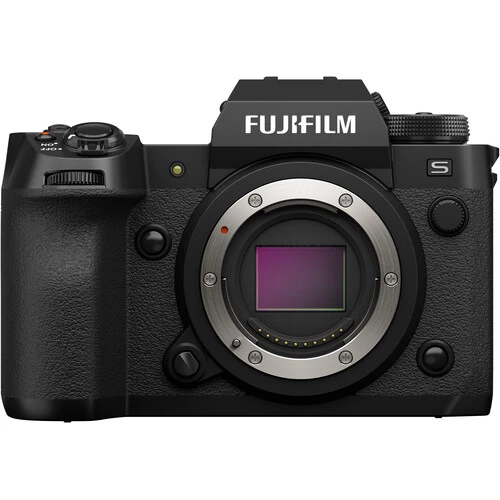
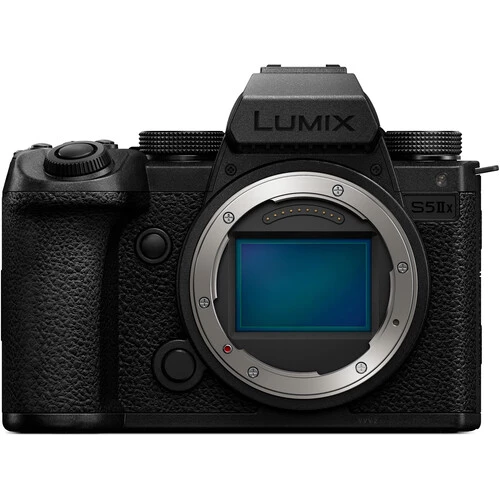
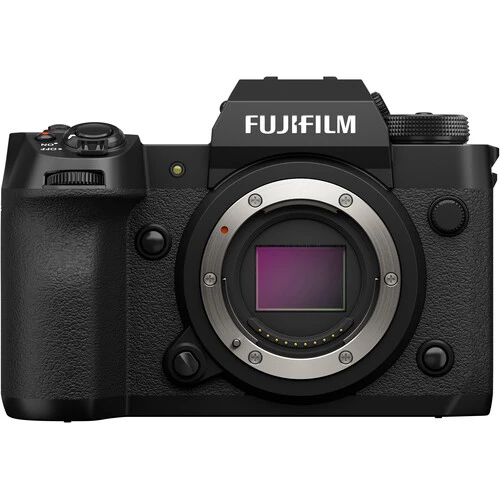
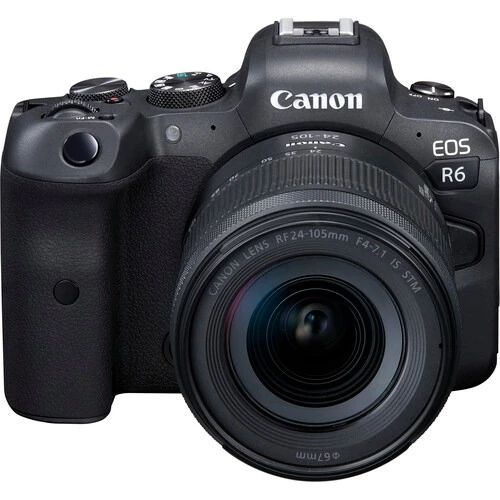
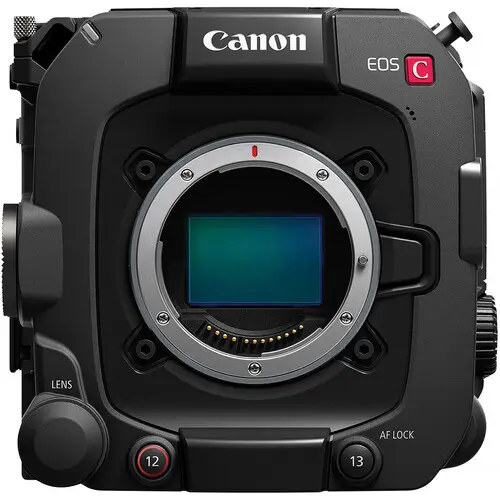
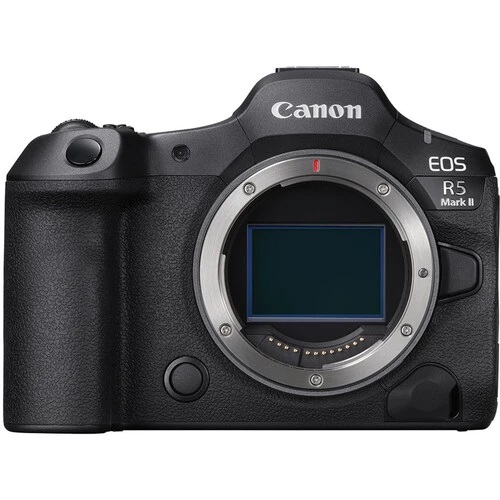
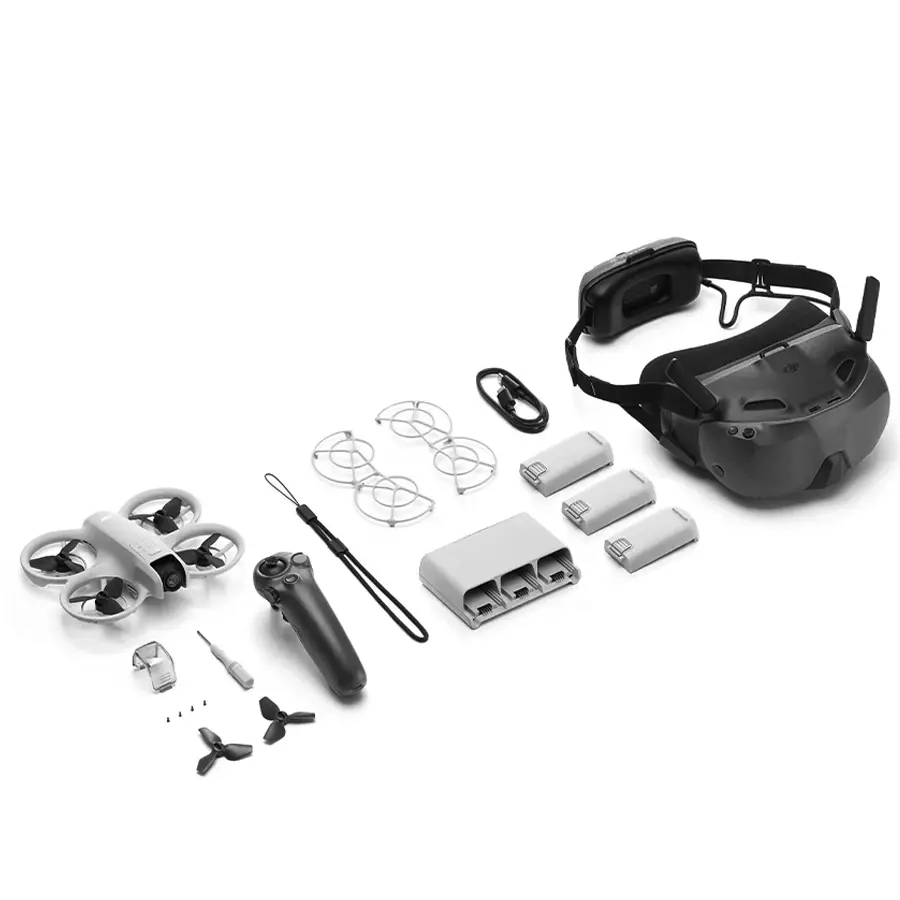
.webp)
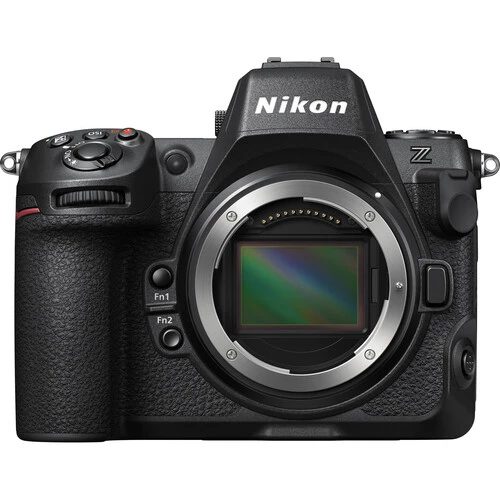
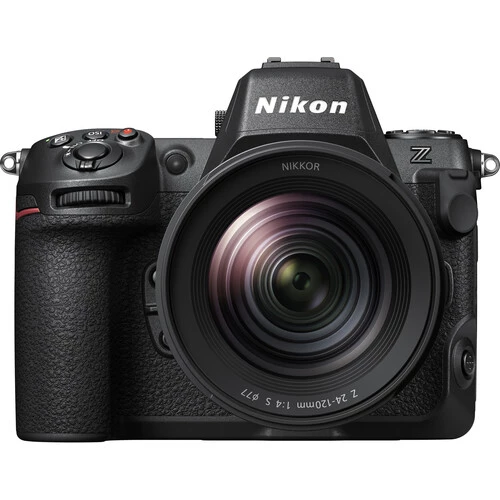
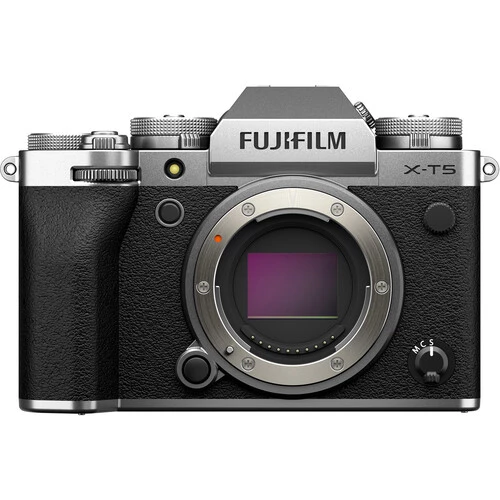
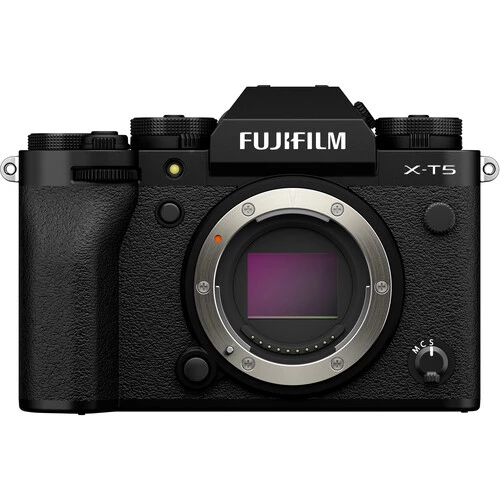
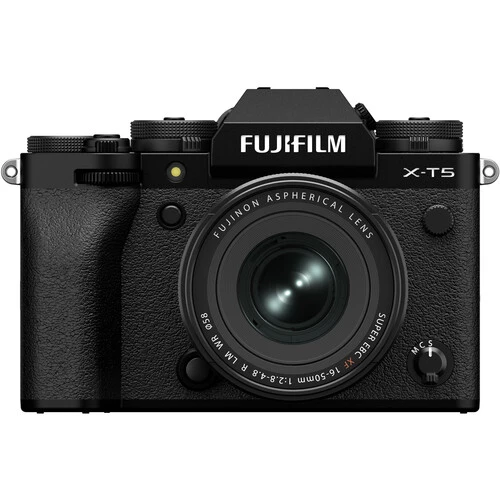
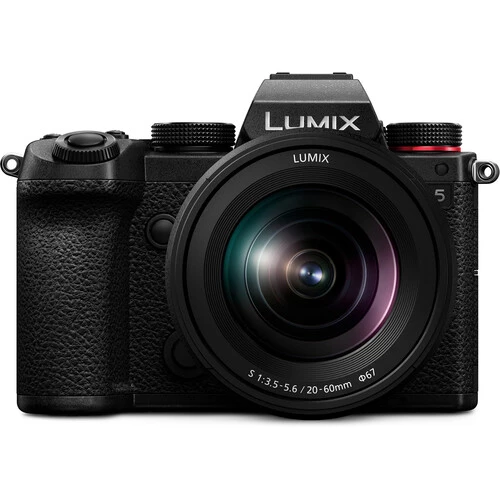
 (1).webp)

